Most Unusual Creatures on Earth That You Likely Haven't Heard Of
14 Feb 2024Strange creatures inhabit various corners of our planet. Some impress with beauty and vibrant colors, while others are frightened by their bizarre appearance. This compilation of 50 peculiar animals encompasses a diverse range, from brightly colored, venomous sea slugs to geckos that have adapted to mimic leaves perfectly. These unusual animals often serve as wonders of the natural world, exhibiting capabilities and evolutionary adaptations.
1. Mantis Shrimp
This marine creature will not leave you indifferent. They seem to have come to us from the otherworldly realm. Mantis shrimp come in a range of vivid colors, contributing to their surreal look. They inhabit tropical and subtropical waters in the Indian and Pacific Oceans, preying on fish, crabs, snails, shrimp, and squid.
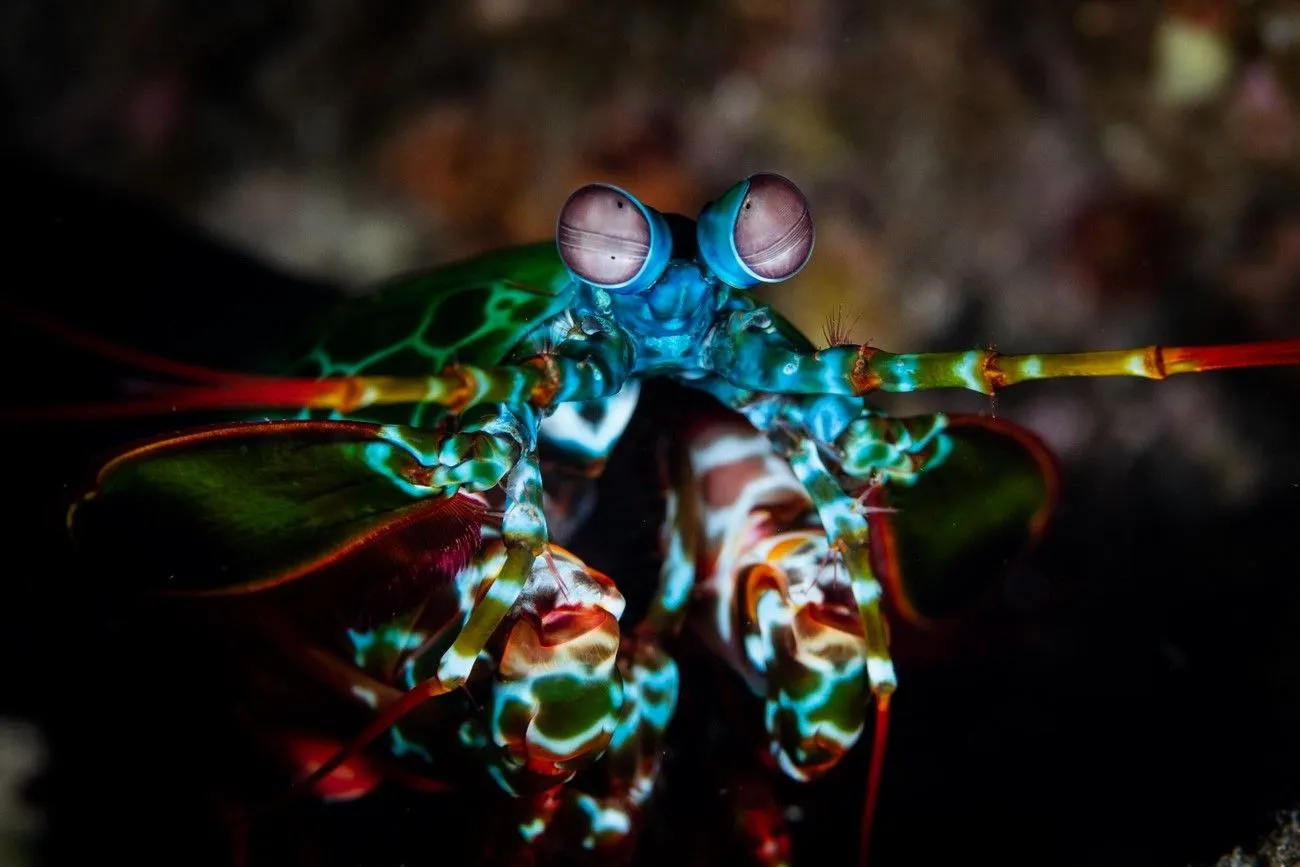
These marine inhabitants have unique abilities. Renowned for their immense strength, they utilize their sharp claws to strike their prey with the impact of a bullet. Mantis shrimp possess the astonishing ability to fracture aquarium glass with their blows. Additionally, they boast remarkable vision, discerning 12 color channels compared to humans' three.
2. Venezuelan Poodle Moth
The Venezuelan Poodle Moth is a fascinating insect that has captured the attention of entomologists and the public alike. Discovered in Venezuela in 2009 by Dr. Arthur Anker, a zoologist, and entomologist, this moth quickly gained popularity due to its peculiar appearance, which some describe as resembling a fluffy poodle or a tiny flying cotton ball.
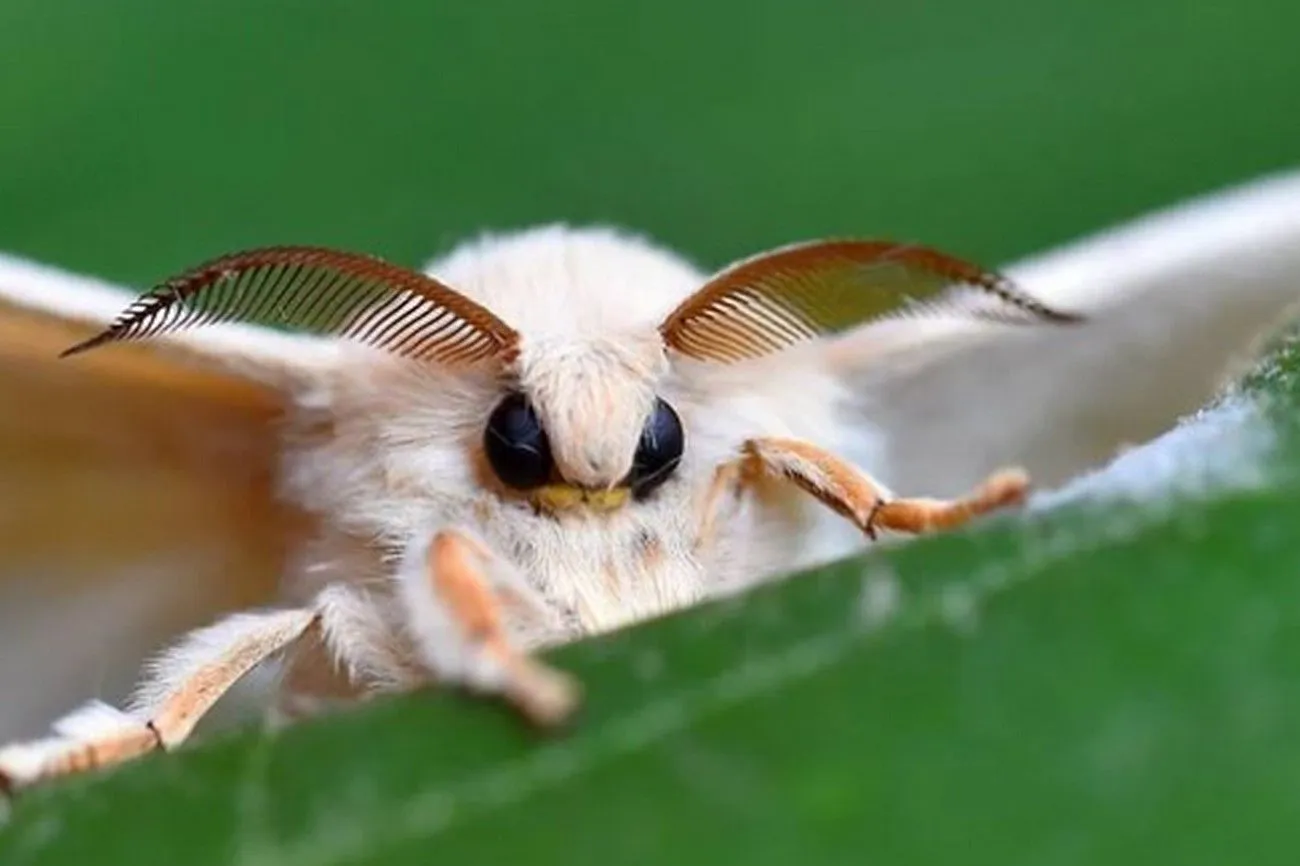
This unique moth boasts a dense coat of whitish-gray fur covering its body. Its large, bulging black eyes and feathery antennae add to its endearing and unusual appearance. Despite its striking resemblance to a fluffy dog, it's important to note that the Venezuelan Poodle Moth is indeed an insect, belonging to the Lepidoptera order, which includes butterflies and moths.
3. Red-Lipped Batfish
The Red-Lipped Batfish, native to the Galapagos Islands, is a peculiar marine creature known for its distinctive appearance and unusual behavior. Despite being a fish, it's not particularly skilled at swimming like its counterparts. Instead, it relies on its unique adaptation - using its modified pectoral fins to "walk" along the ocean floor.
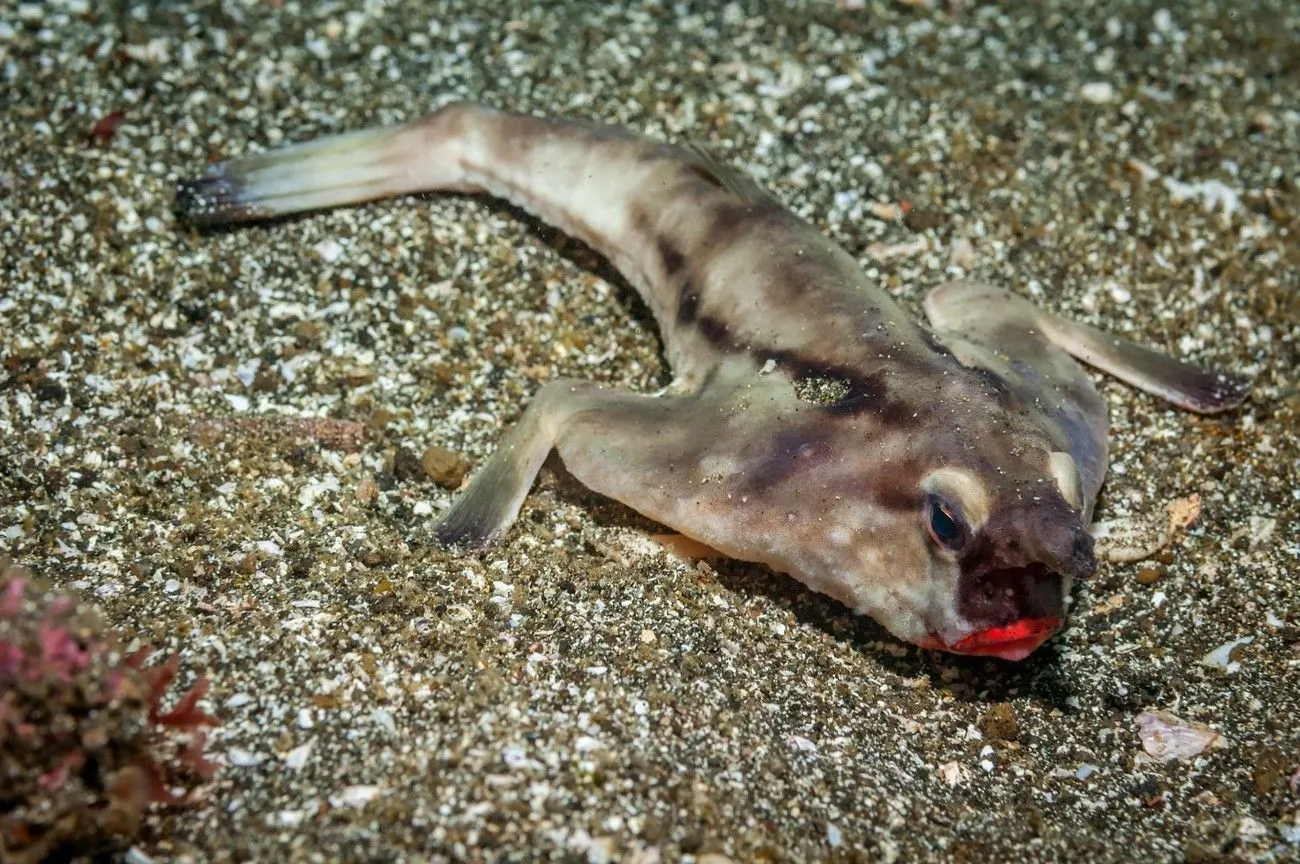
This quirky method of locomotion sets it apart from other fish species and adds to its charm and intrigue. With its bright red lips and peculiar waddling movement, the Red-Lipped Batfish is a fascinating example of the diversity found in the oceanic realm. This marine creature has not yet been fully studied and continues to intrigue scientists.
4. Glass Frog
Glass frogs, found in South America, belong to a family of amphibians characterized by a remarkable feature: transparent abdomens. This unique trait allows observers to see their internal organs through the skin, hence the common name "glass frogs." These frogs are typically small, arboreal creatures, spending most of their time in trees near streams or rivers.
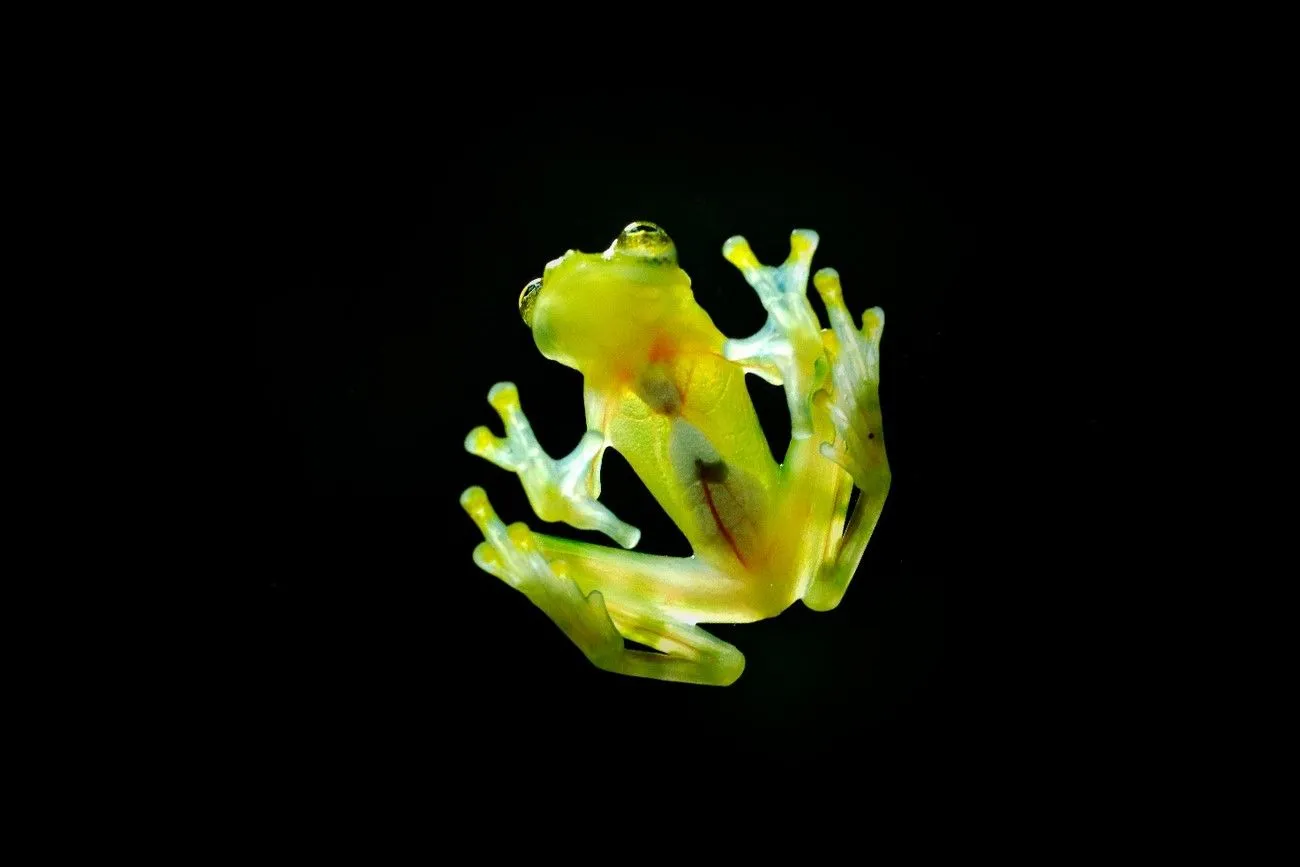
The transparent skin provides camouflage by allowing light to pass through, making them less visible to predators. Additionally, this transparency aids in thermoregulation, enabling them to absorb sunlight more efficiently. Despite their translucent appearance, glass frogs possess vibrant colors on their upper surfaces, adding to their intriguing and captivating nature.
5. Japanese Spider Crab
The Japanese spider crab, native to the waters near Japan, holds the title for the largest leg span of any arthropod, stretching up to a whopping 5.5 meters (18 feet). Despite its intimidating appearance with long, spindly legs and a fearsome-looking carapace, this crab is surprisingly gentle-natured, as reported by divers who have encountered them in their natural habitat.
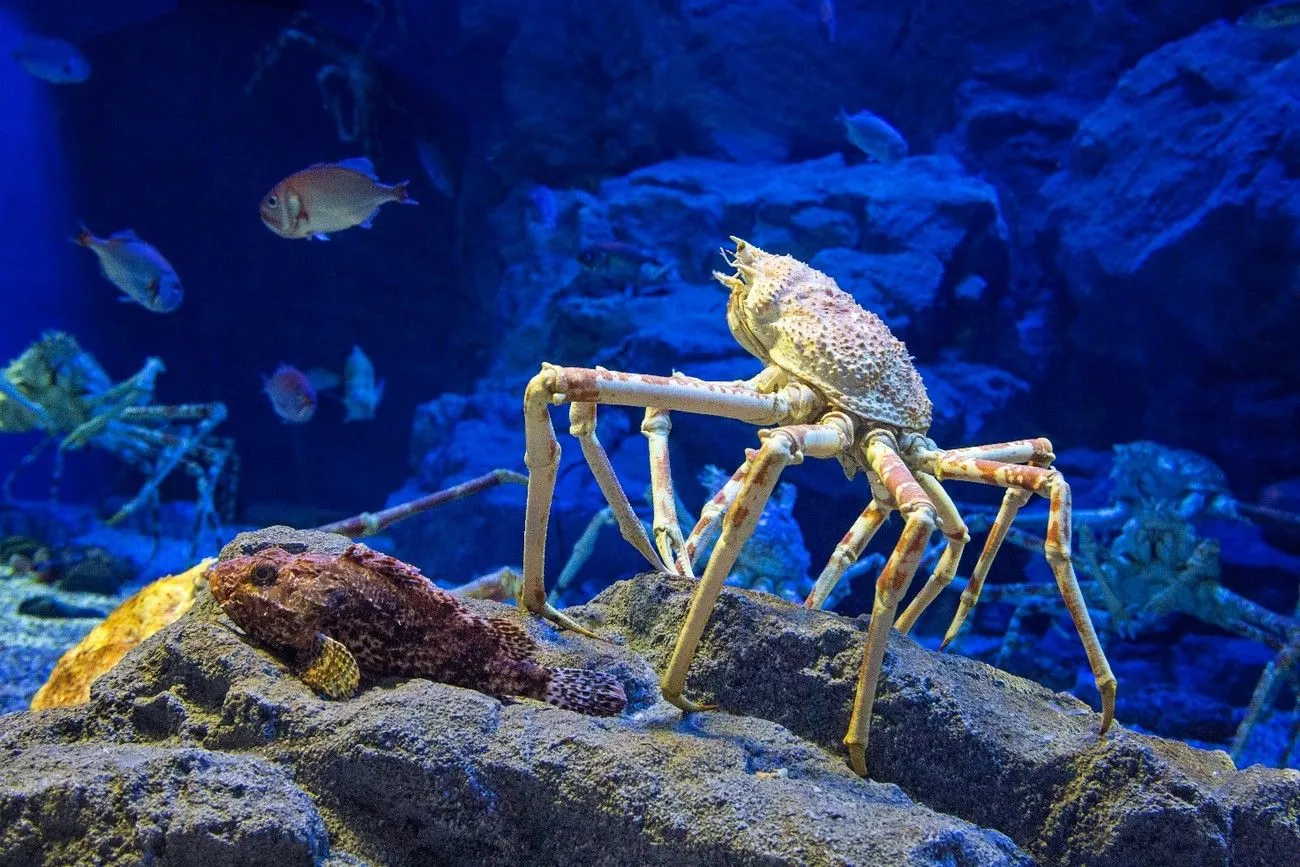
Despite its colossal size, the Japanese spider crab is primarily a scavenger, feeding on dead animals and carrion found on the ocean floor. Its long legs serve multiple purposes, including locomotion, sensory perception, and defense against predators. The Japanese spider crab has become a fascinating subject for marine biologists.
6. Leafy Seadragon
Found along the southern and western coasts of Australia, the leafy seadragon is a mesmerizing marine creature renowned for its remarkable camouflage. Resembling a piece of drifting seaweed, the leafy seadragon possesses long, leaf-like appendages covering its body, which effectively conceal it among the underwater vegetation.
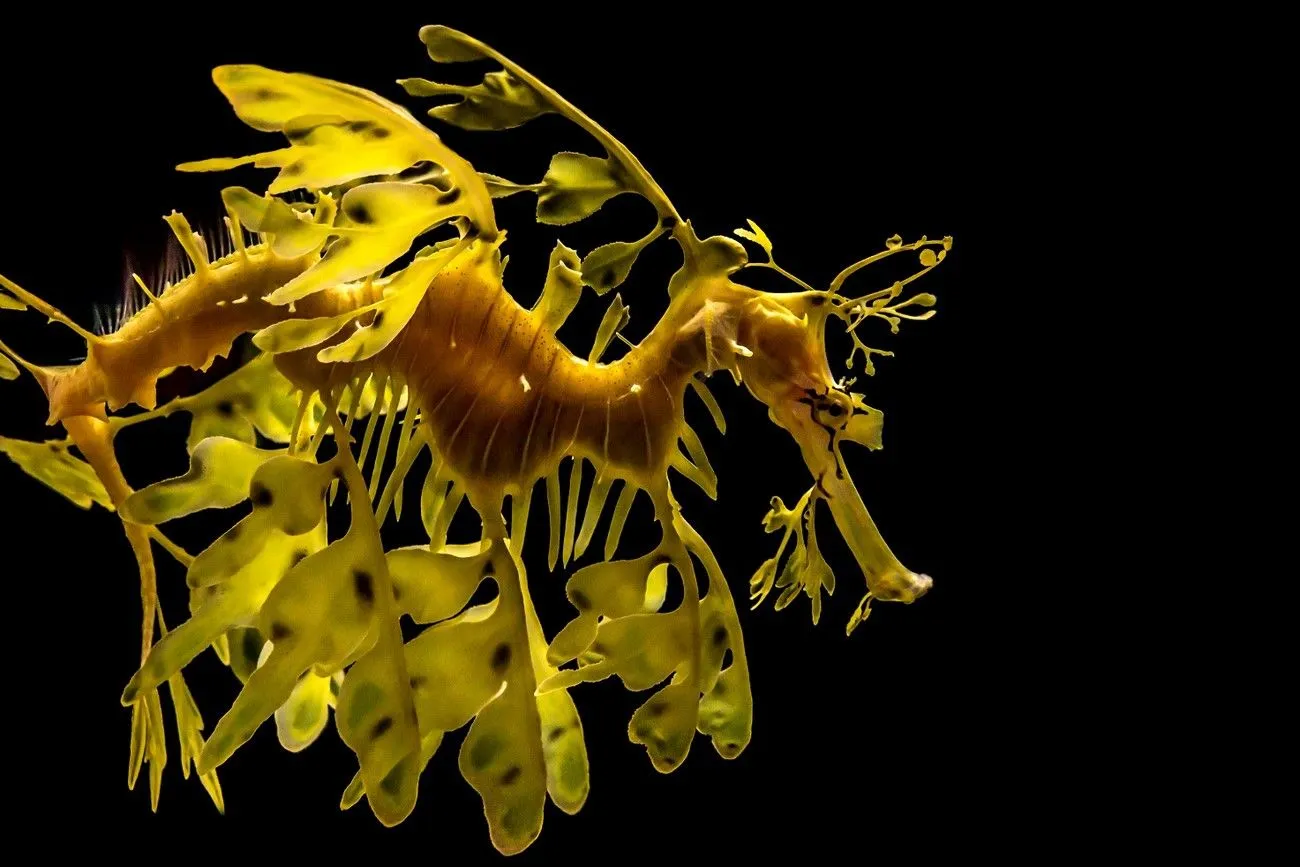
These intricate structures not only serve as camouflage but also provide the seadragon with enhanced maneuverability as it navigates the ocean currents. Unlike its close relatives, the seahorses and pipefish, leafy seadragons do not have prehensile tails and are not strong swimmers. Instead, they rely on their camouflage to avoid detection by predators such as larger fish and seabirds.
7. Lilac-Breasted Roller
Widely distributed across sub-Saharan Africa and the southern Arabian Peninsula, the lilac-breasted roller is a striking bird renowned for its vibrant plumage and distinctive hunting behavior. These colorful avians prefer perching in high trees and other vantage points, allowing them to survey their surroundings and spot potential prey on the ground below.

One of the most captivating features of the lilac-breasted roller is its stunning plumage, characterized by deep lilac breast feathers that contrast beautifully with its turquoise-blue wings, rich green back, and fiery orange belly. During flight, their wings flash with brilliant colors, making them a spectacle to behold in their natural habitat.
8. Komondor Dog
The Komondor, also known as the Hungarian Komondor or Hungarian Sheepdog, is a large and distinctive breed renowned for its unique corded coat, which resembles long, thick dreadlocks. Originating from Hungary, these majestic dogs were traditionally used as livestock guardians, protecting flocks of sheep and cattle from predators.

One of the most striking features of the Komondor is its dense, corded coat, which forms naturally over time. The coat consists of long, curly strands of hair that intertwine and mat together, creating a thick, protective layer that shields the dog from harsh weather conditions and potential predators. This distinctive coat serves as both insulation and camouflage.
9. Axolotl
You definitely haven't seen such animals before, as they are very unusual. The Axolotl stands out as one of the most distinctive amphibians globally. Beyond its charming appearance, this creature possesses the remarkable trait of neoteny, whereby adults retain their aquatic and gilled form instead of undergoing metamorphosis upon reaching maturity.

Additionally, they possess an extraordinary ability to regenerate nearly any part of their body. Although axolotls face near-extinction in their native Mexico, they have flourished in captive settings, becoming highly valued by both the scientific community and private individuals as pets. Scientists still study them with enthusiasm. Scientists still study them with enthusiasm.
10. Platypus
The platypus is an intriguing mammal indigenous to Australia. It has a duck-like bill, a beaver-like tail, and webbed feet, making it one of the most unusual creatures in the animal kingdom. Despite being a mammal, the platypus lays eggs rather than giving birth to live young. The males possess venomous spurs on their hind legs, which they use during competition and mating rituals.

The platypus is a master of aquatic life, spending much of its time in rivers and streams, where it hunts for insects, shellfish, and small vertebrates using its sensitive bill to detect electric fields generated by its prey. Due to habitat loss and pollution, the platypus faces threats to its survival, making conservation efforts crucial for its continued existence in the wild.
11. Nudibranch
Sea slugs, commonly referred to as nudibranchs, are shell-less marine mollusks that respire through gills located on the undersides of their bodies. They exhibit a diverse array of vibrant colors and patterns. As a defense strategy, numerous nudibranch species convert the toxins of their prey into stinging cells located on their bodies.
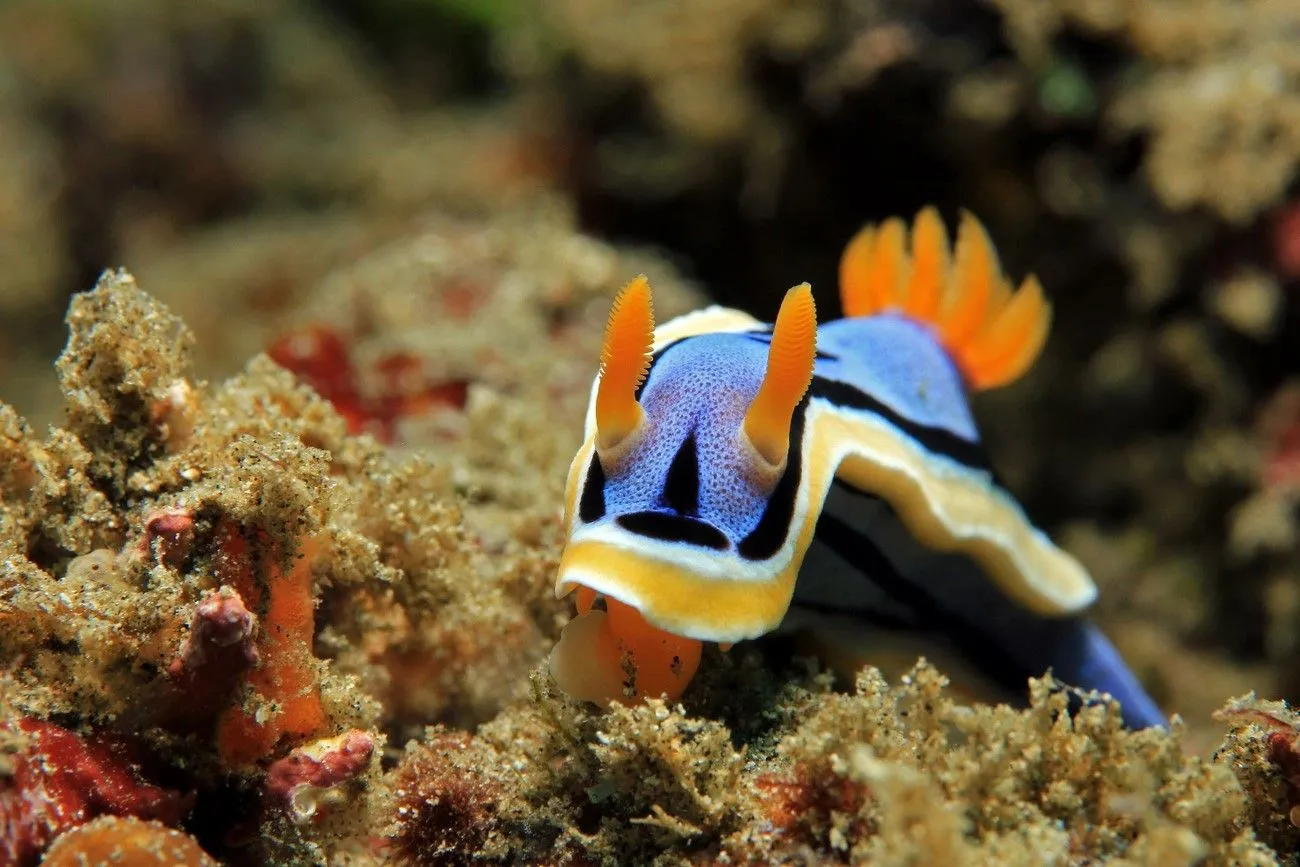
They employ them to deter predators through their cerata—tentacle-like extensions on their backs or sides. In addition to their striking appearance and defensive mechanisms, nudibranchs are also fascinating due to their reproductive strategies. They exhibit hermaphroditism, which indicates they have both male and female reproductive organs.
12. Flying Fish
Another rare marine wonder of nature that captivates with its brightness. Flying fish are remarkable creatures with expanded pectoral fins that allow them to glide over the water surface for impressive distances, reaching up to 650 feet. When swimming, these fins retract flat against their bodies, minimizing resistance.
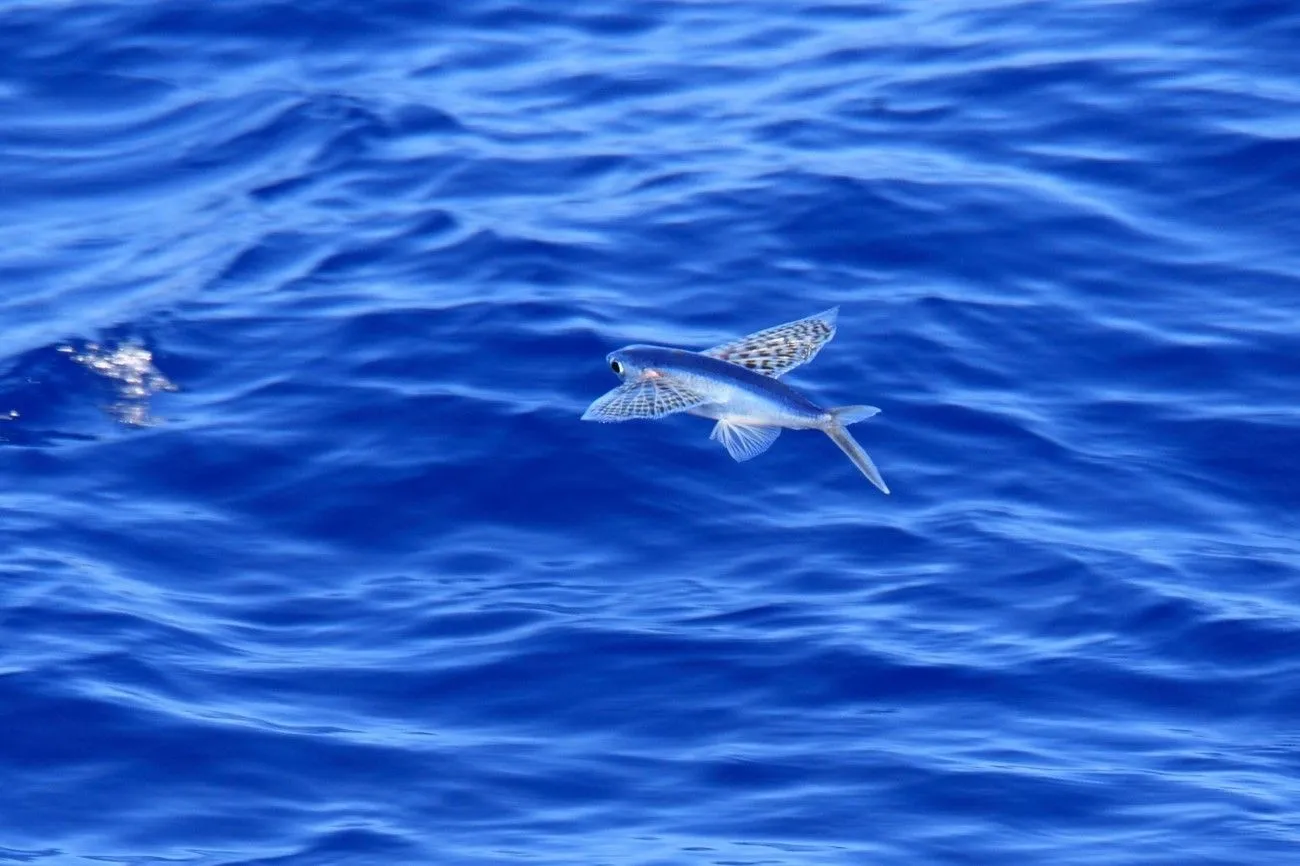
The longest recorded flight time for a flying fish is an astounding 45 seconds, a feat witnessed off the coast of Yakushima Island, Japan. However, despite their remarkable aerial abilities, flying fish face risks from predators, particularly birds, while leaping out of the water. These predators often capitalize on the fish's vulnerable moment of flight, making them susceptible to attacks from above.
13. Giant Clam
The Giant Clam, known scientifically as Tridacna gigas, is one of the most fascinating creatures of the ocean. These massive mollusks, native to the warm waters of the South Pacific and Indian Oceans, are the largest living bivalve mollusks on Earth. With a lifespan extending beyond a century, giant clams are renowned for their impressive size, vibrant colors, and intricate patterns.
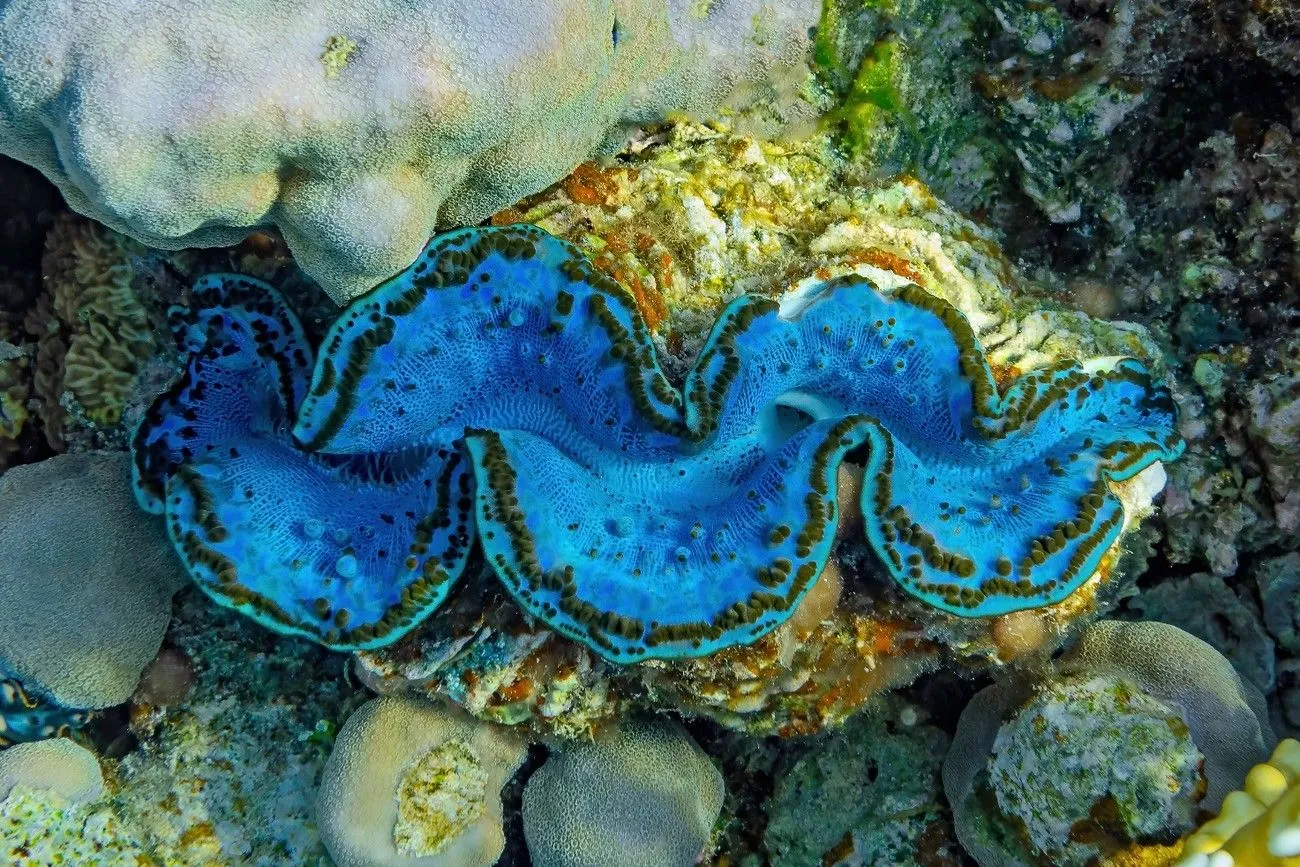
What sets the Giant Clam apart is its ability to form a symbiotic relationship with algae called zooxanthellae, which live within its tissues. These algae harness sunlight to produce energy through photosynthesis, providing the clam with essential nutrients and contributing to its vivid hues. In return, the clam offers the algae a protected environment and access to sunlight.
14. Sloth
Sloths, with their slow-paced lifestyle and endearing appearance, are fascinating creatures that capture the hearts of many. These arboreal mammals, native to the rainforests of Central and South America, are renowned for their exceptionally leisurely movements, earning them the title of the world's slowest mammals.
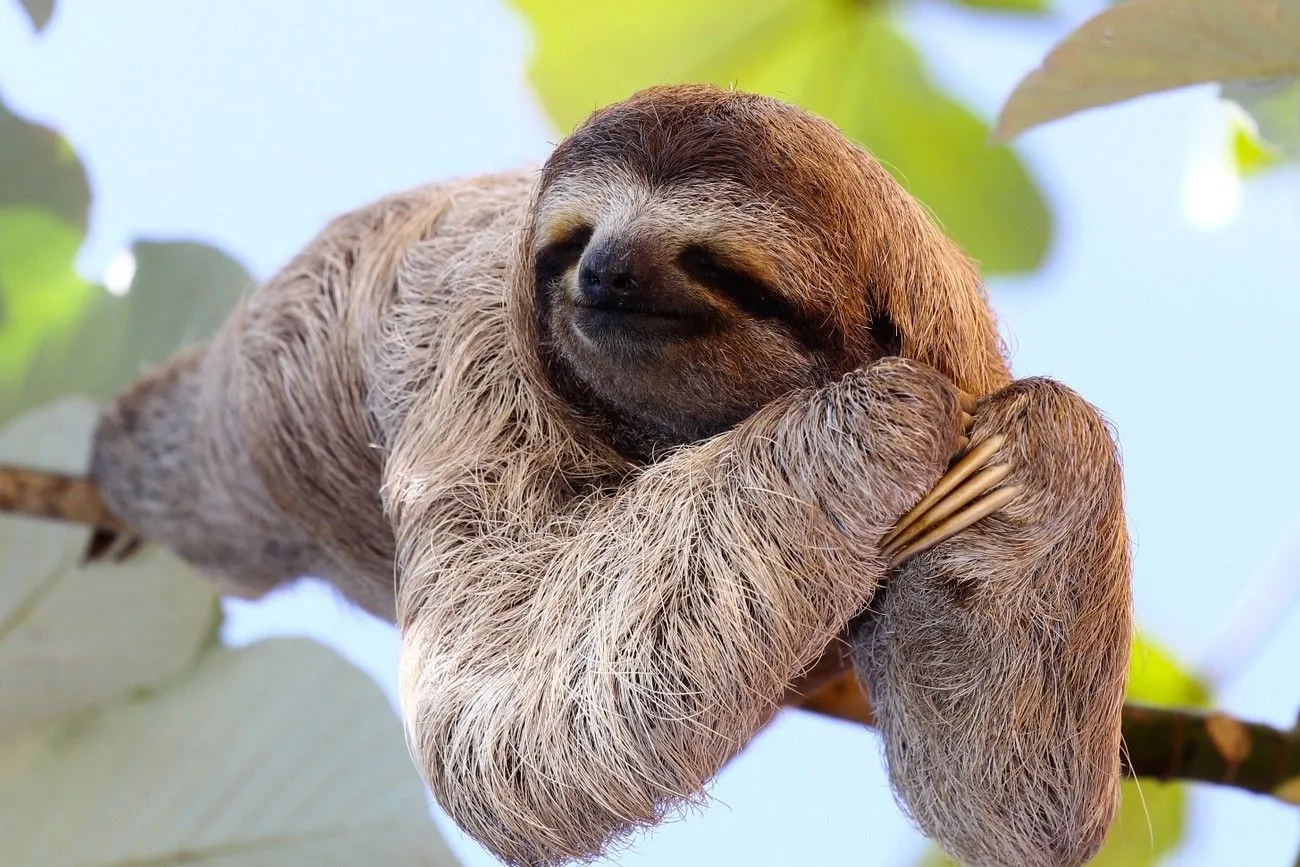
Their slow metabolism and low-energy diet consisting primarily of leaves allow them to conserve energy and spend most of their time hanging upside down from branches. Despite their sluggish reputation, they are excellent swimmers and can hold their breath for up to 40 minutes, using their long arms to paddle through the water with surprising agility.
15. Vietnamese Long-Nosed Snake
One of the most captivating features of the Vietnamese long-nosed snake is its distinctive elongated snout, which sets it apart from other snake species. It primarily inhabits forested areas and is known for its arboreal lifestyle, spending much of its time in trees. Its slender body and prehensile tail enable it to maneuver adeptly among branches, making it a skilled climber.

The Vietnamese long-nosed snake is equipped with potent venom, which it uses to subdue its prey, consisting mainly of small mammals, birds, and lizards. Despite its venomous nature, it poses little threat to humans due to its relatively small size and shy demeanor. However, like many other reptile species, it faces threats from habitat loss and deforestation.
16. Proboscis Monkey
Proboscis monkeys are famous for their distinctive large, fleshy noses, which are more prominent in males than females. Primates are found exclusively on the island of Borneo, particularly in the rainforests of Malaysia and Indonesia. The purpose of this unusual feature is still debated among scientists, but it's believed to play a role in vocalizations, attracting mates, and regulating body temperature.
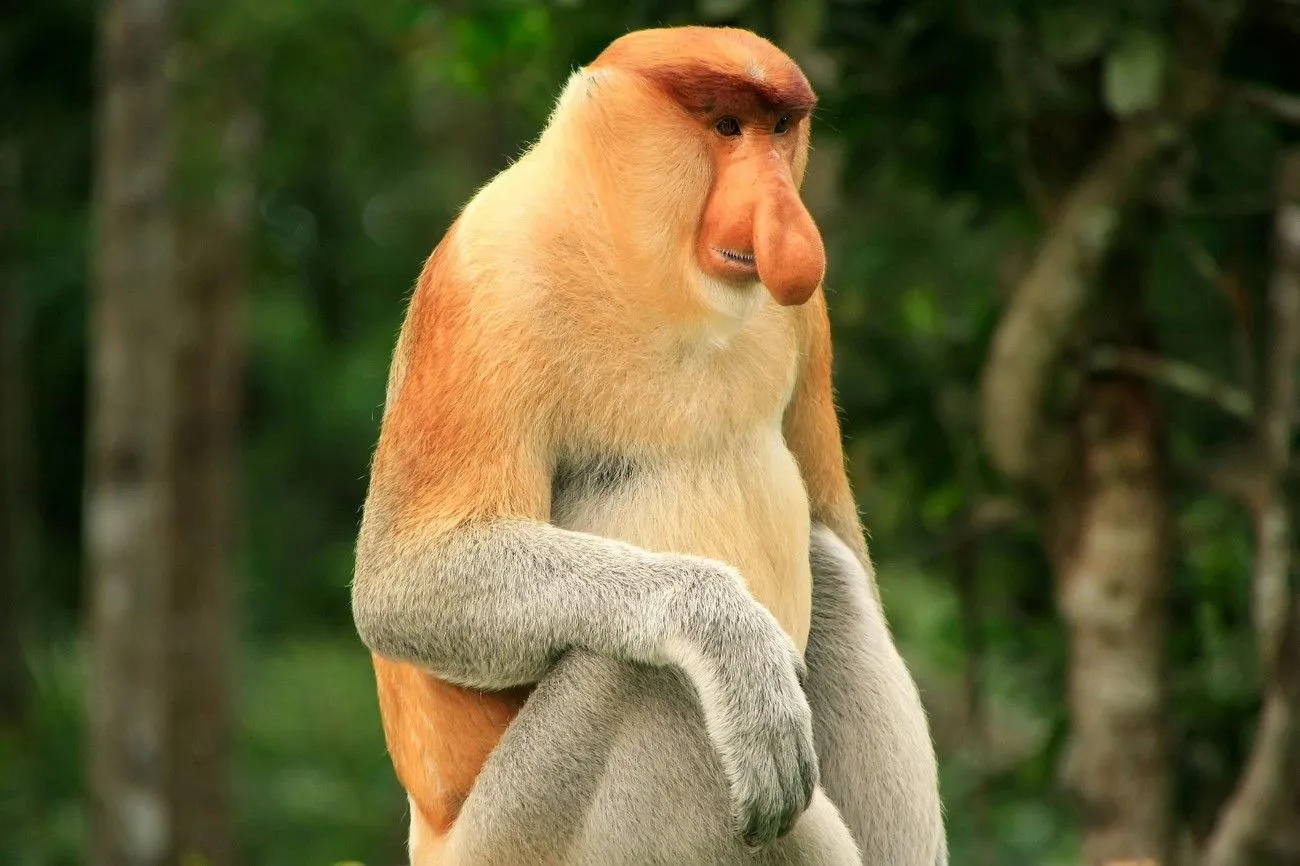
Proboscis monkeys live in complex social groups known as harems, consisting of one dominant male, multiple females, and their offspring. The dominant male defends the group's territory and reproductive rights, while subordinate males form bachelor groups until they can challenge the alpha male.
17. Naked Mole Rat
Hairless rodents known as naked mole rats inhabit underground passages, navigating through tunnels using their whiskers, tiny sensory hairs on their tails, and between their toes. With no external ears and very small eyes, they are nearly blind and depend heavily on their sense of smell and the vibrations in the earth.
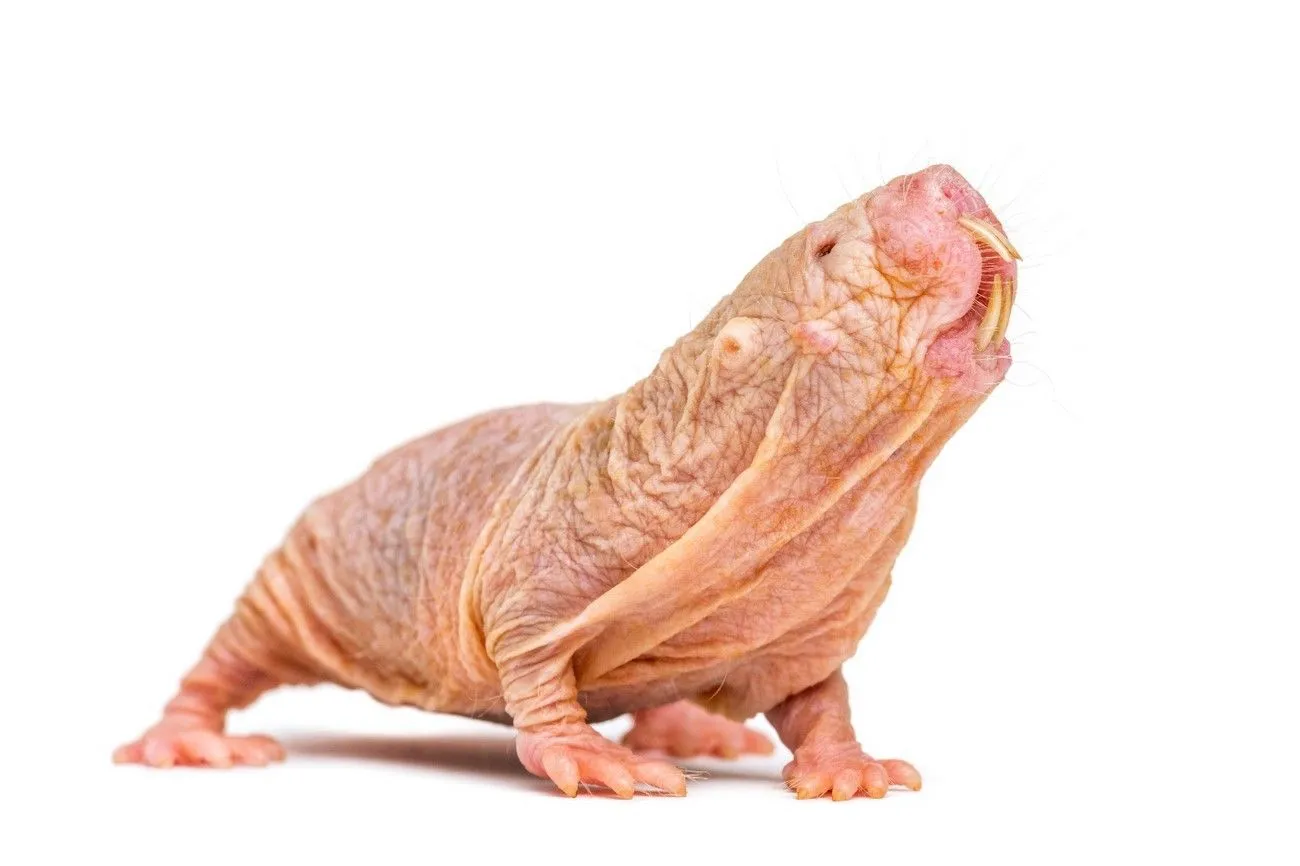
Naked mole rats have impressive longevity, with some individuals living up to 30 years. These rodents live in colonies led by a queen, with a complex social structure resembling that of certain insects like ants and bees. Each colony typically consists of one queen, several breeding males, and numerous non-breeding workers.
18. Tenrec
Various species of tenrec resemble different animals, such as hedgehogs, opossums, or mice, but they are not closely related to any of these creatures. Their nearest relatives include otter shrews, elephant shrews, and golden moles. Like hedgehogs, tenrecs are covered in spikes and can curl into defensive balls when threatened by predators.
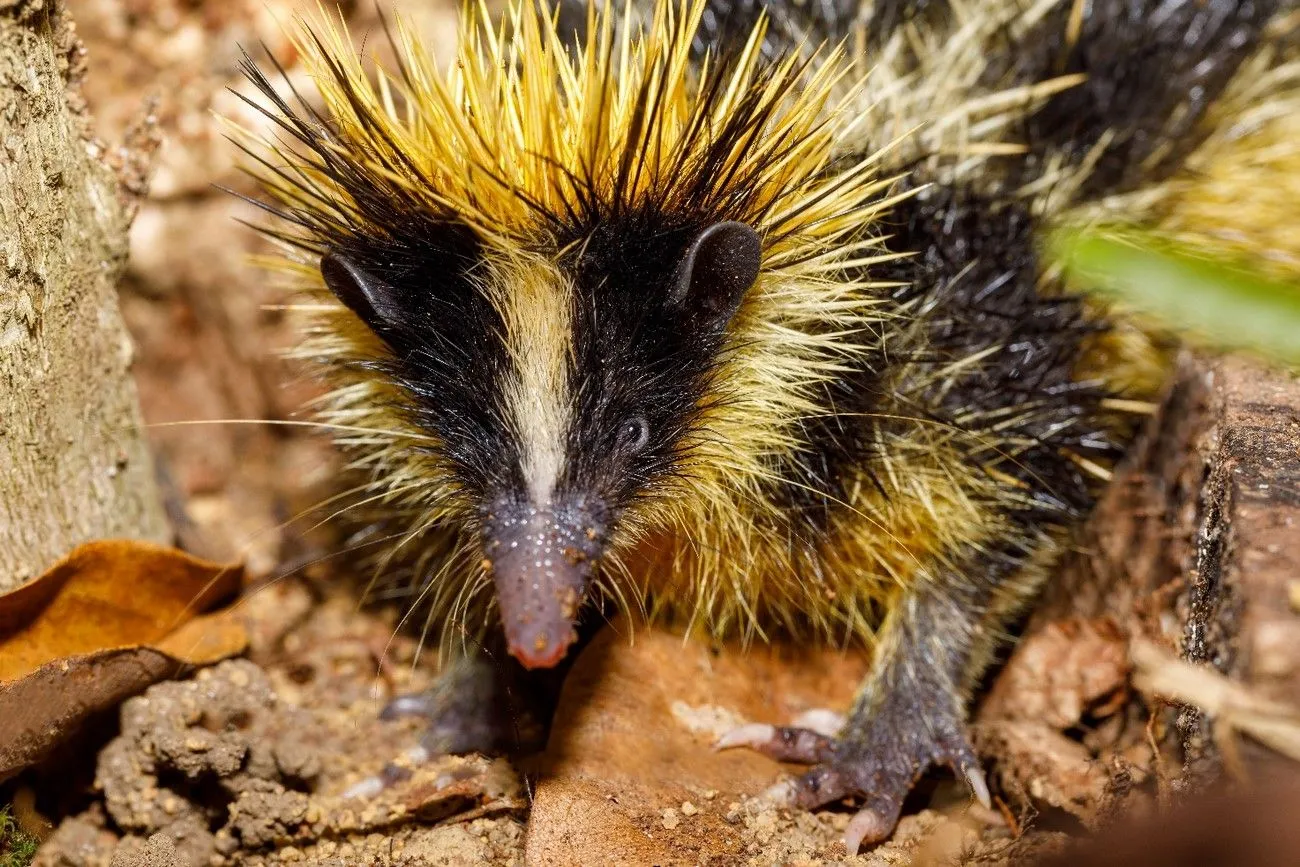
However, unlike hedgehogs, tenrecs will emerge from their nearly impenetrable balled-up position to attack predators if sufficiently provoked. Tenrecs possess an unusually low body temperature, ranging from 86 to 95 degrees Fahrenheit. This unique physiological trait sets them apart from many other mammals and contributes to their remarkable adaptability to various environments.
19. Lemming
Lemmings are famously associated with the myth that they engage in mass suicide by leaping off cliffs. Periodically, lemming populations undergo dramatic fluctuations, experiencing rapid increases followed by sharp declines that can bring them close to extinction. This phenomenon is believed to occur when lemmings migrate to new territories.

During these migrations, large numbers of lemmings may perish, contributing to the misconception of mass suicide. This fluctuation in population size has also led to various other myths about lemmings throughout history, including the erroneous belief that they fall from the sky during rain showers.
20. Saiga Antelope
The saiga antelope, found across the vast Eurasian steppe, boasts one of the most remarkable features in the animal kingdom: its oversized and incredibly flexible nose structure, known as the proboscis. This unique adaptation serves multiple purposes, including filtering out dust and cooling the air during hot summers, as well as warming cold air during harsh winters.
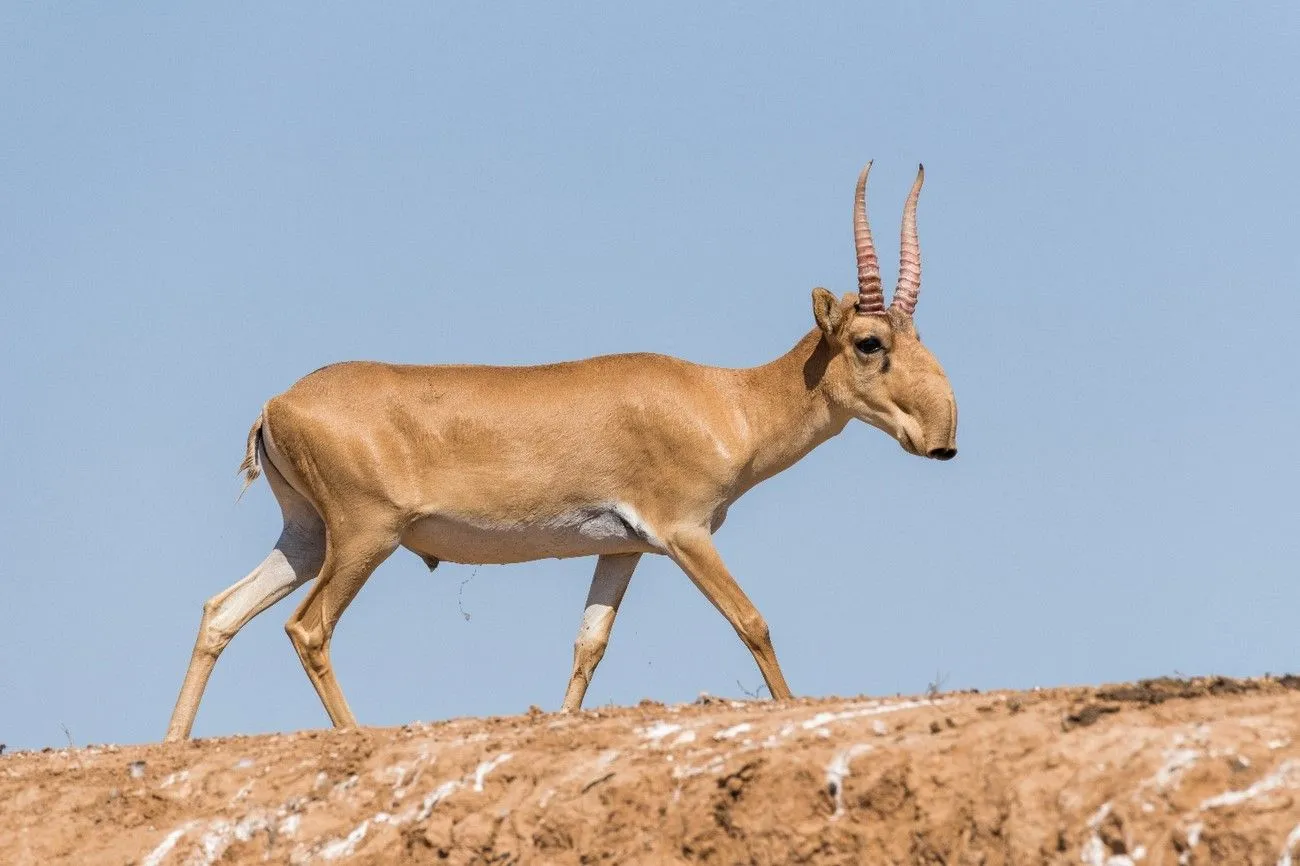
These antelopes undertake one of the longest overland migrations of any mammal, covering hundreds of miles each year in search of food and water. Despite its exceptional survival mechanisms, the saiga antelope faces a critical threat. Efforts to protect and conserve this extraordinary species are crucial to ensuring its continued existence in the wild.
21. Dumbo Octopus
The Dumbo octopus is a rare and elusive creature that inhabits the depths of the ocean, primarily in the abyssal plains. Its most distinctive feature is its large ear-like fins, which resemble the ears of Disney's Dumbo the Elephant, hence its name. They are known for their graceful movements, gently drifting through the water with the help of their ear-like fins.
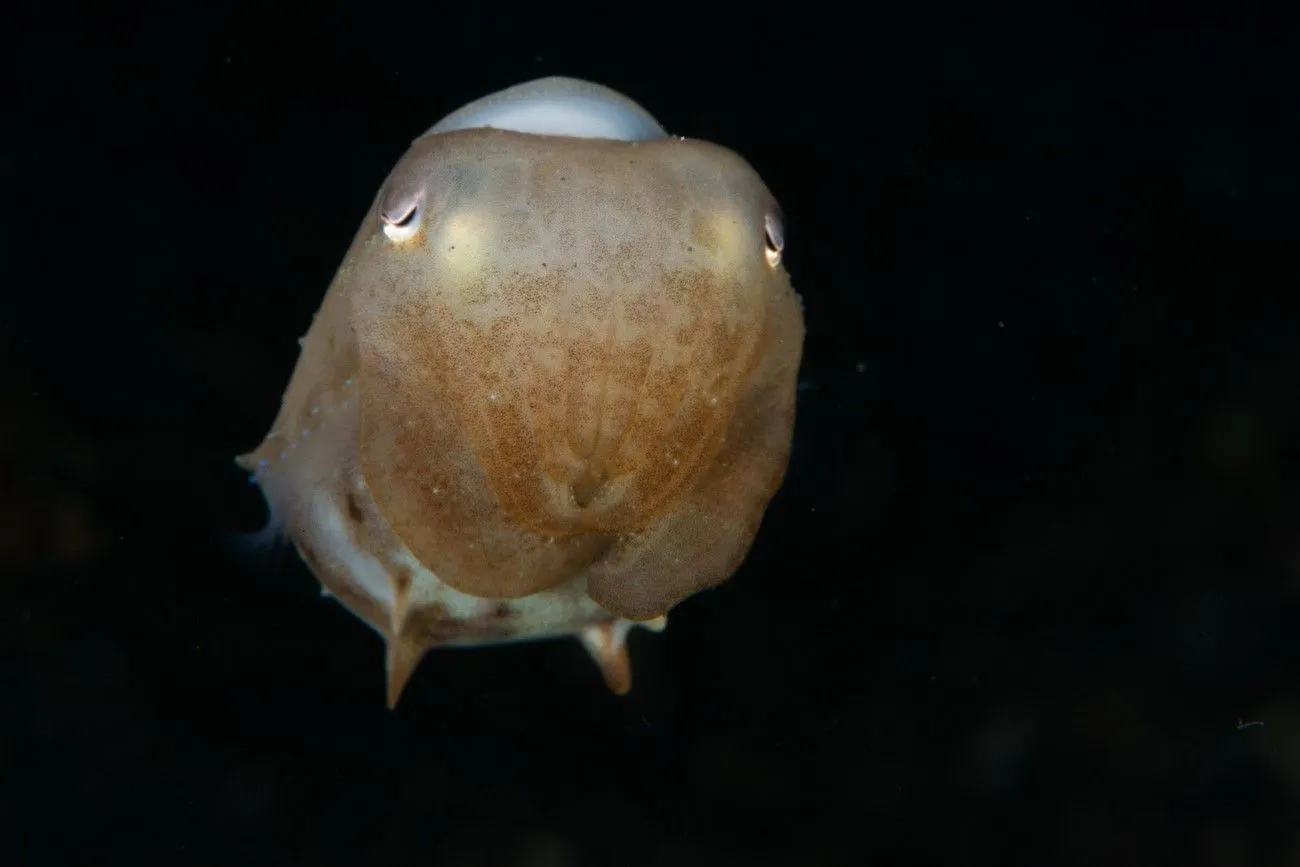
These octopuses typically reside at depths ranging from 3,000 to 4,000 meters (9,800 to 13,100 feet), making them one of the deepest-living octopus species. Like other octopuses, Dumbo can change their color to blend in with their surroundings, providing them with effective camouflage in the dark depths of the ocean.
22. Tufted Deer
Another unique and unusual animal. The tufted deer, native to central China, is a diminutive species of deer recognized by its distinctive tuft of black hair adorning its forehead and the fang-like canines observed in males. Preferring solitude, though occasionally found in pairs, this deer species favors habitats offering ample cover.
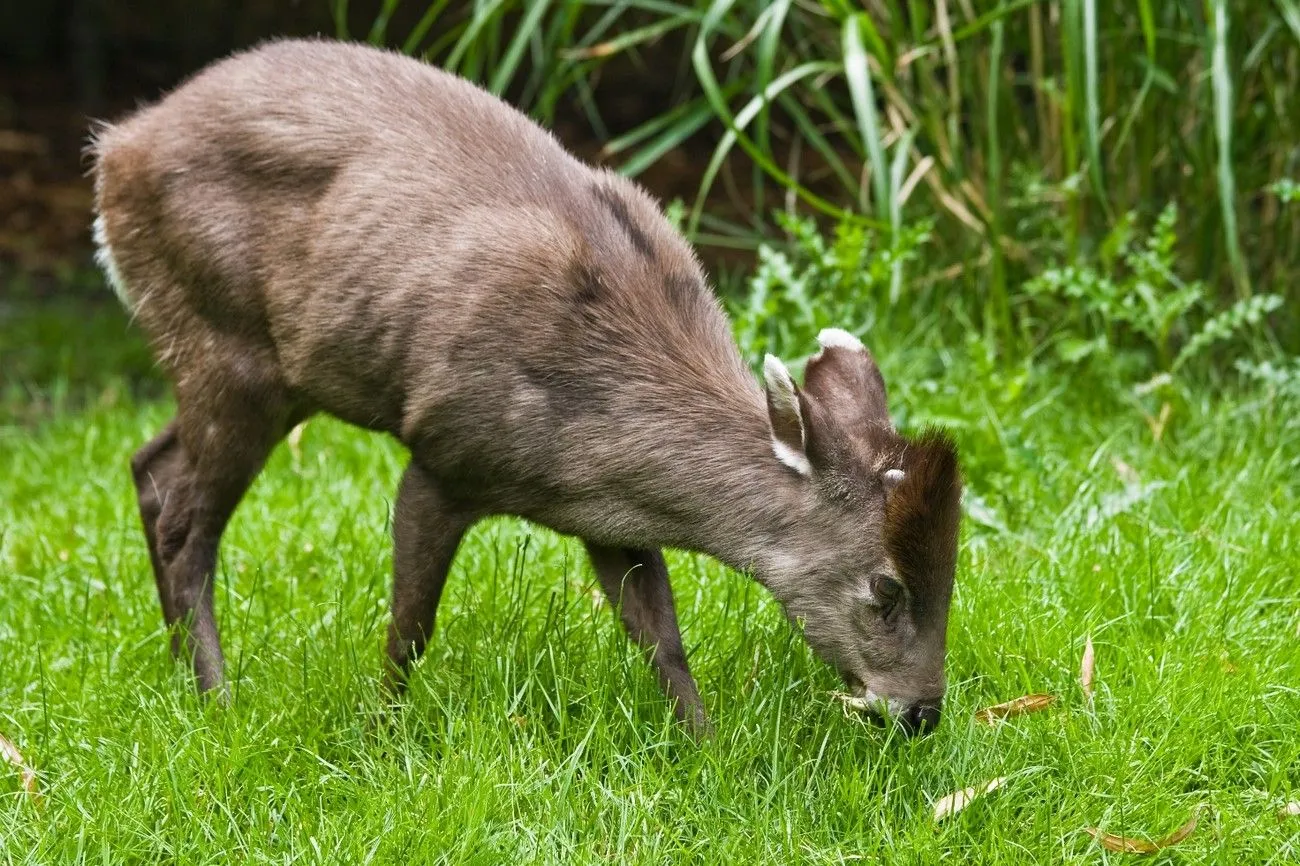
Additionally, male tufted deer exhibit modest horns and elongated canines, resembling fangs, extending beyond their lower lips. These deer form bonded pairs and traverse regions spanning China, eastern Tibet, and Myanmar in search of salt licks. Typically shy during daylight hours, they become more active during the evening and nighttime hours.
23. Honduran White Bat
The Honduran white bat, also known as the Caribbean white tent-making bat, is a captivating creature with a striking appearance. Sporting pristine white fur with gray-tipped hairs and a distinctive leaf-shaped nose, it stands out as one of the most unique bats in the animal kingdom. What truly sets this bat apart is its remarkable behavior.

Rather than roosting in caves like many other bat species, the Honduran white bat takes a more creative approach to shelter. It constructs intricate "tents" using large leaves found in its tropical habitat. These tents are formed by cutting the side veins of the leaf, causing it to fold over and create a cozy, sheltered space for the bat colony.
24. Aye-aye
Sporting bulging eyes, oversized ears, and tufts of hair, the Aye-aye is a peculiar long-fingered lemur, belonging to the strepsirrhine primates native to Madagascar. This distinctive creature possesses rodent-like teeth that continually grow and boasts a unique thin middle finger. The Aye-aye are renowned as the world's largest nocturnal primate.
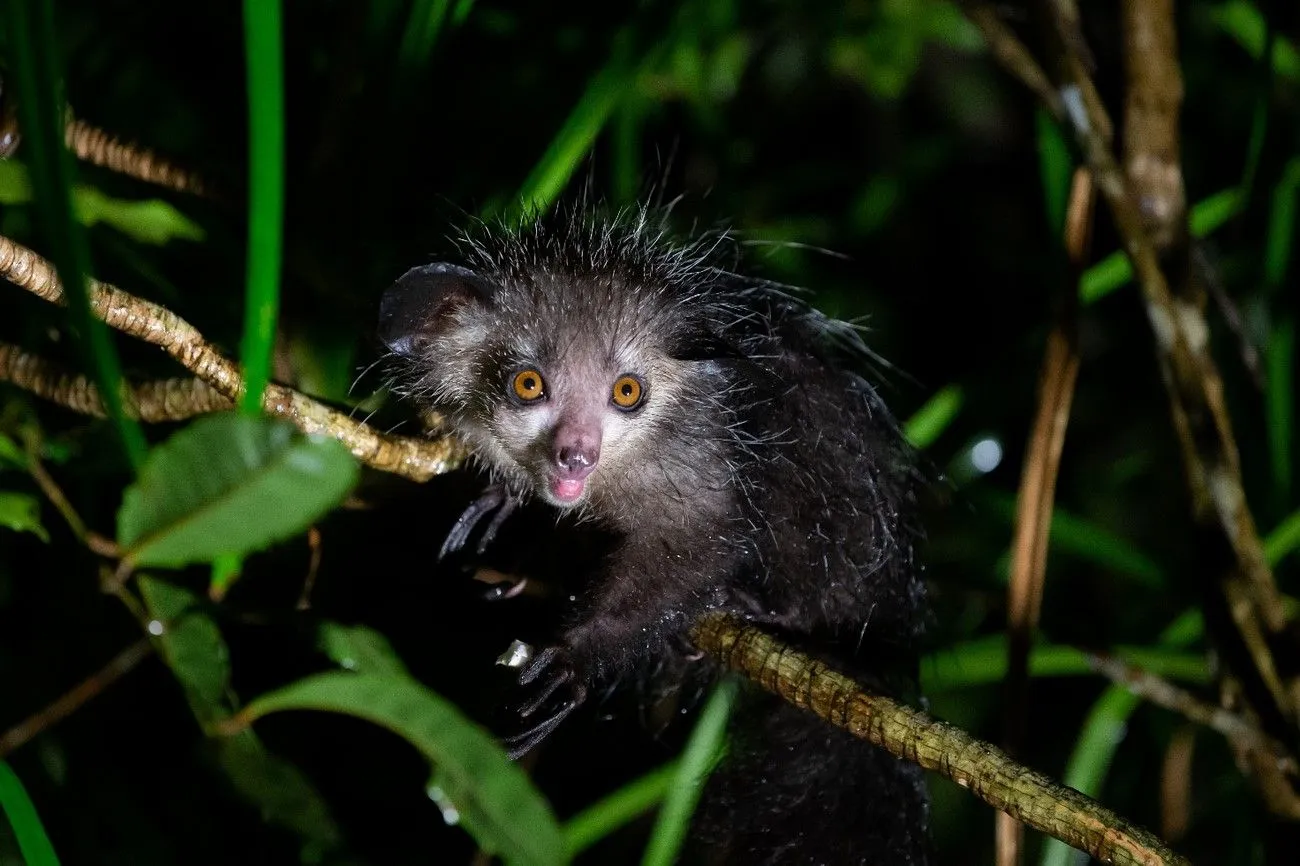
He stands out for their unconventional foraging technique. Rather than relying on sight or scent, it taps on trees to locate grubs, then utilizes its forward-slanting incisors to gnaw holes in the wood. Finally, it deftly inserts its narrow middle finger into the hole to extract the grubs, showcasing its remarkable adaptation for survival in its forest habitat.
25. Frill-necked lizard
The frill-necked lizard, also known as the frilled dragon, is an iconic reptile native to northern Australia and southern New Guinea. This animal looks very intimidating at first glance. One of its most striking features is the impressive frill that encircles its neck, which it displays dramatically when threatened or during courtship displays.
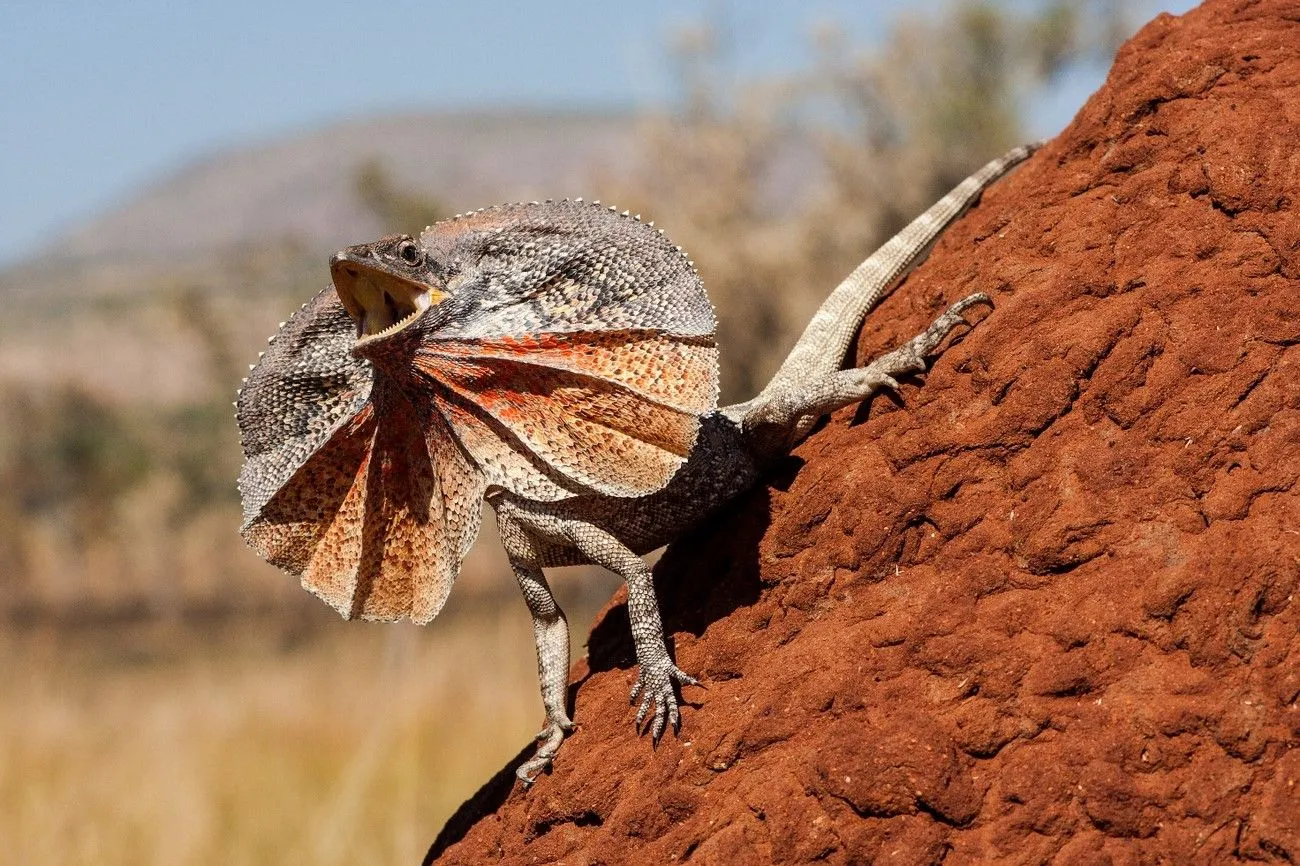
This unique frill is made up of extendable folds of skin supported by cartilage rods. When threatened, the lizard opens its mouth wide, unfurls its frill, and hisses loudly, creating a formidable display intended to scare off predators. However, despite its intimidating appearance, the frill-necked lizard is primarily a shy and elusive creature, preferring to escape danger rather than confront it.
26. Satanic Leaf-Tailed Gecko
The Satanic leaf-tailed gecko, native to Madagascar, is a master of disguise, perfectly blending into its surroundings with its leaf-like appearance. Its tail, resembling a withered leaf, further enhances its camouflage, complete with missing chunks that mimic broken or decaying foliage. These geckos hang from branches, using their cryptic appearance to evade predators by masquerading as leaves.

Interestingly, like many gecko species, the Satanic leaf-tailed gecko lacks eyelids, relying on a transparent membrane to protect its eyes. This remarkable adaptation allows them to maintain their stealthy presence while hunting for insects during the night. Satanic leaf-tailed geckos play a crucial role in their ecosystem by controlling insect populations.
27. Marabou Stork
Marabou storks inhabit Africa and are distinguished by their sizable, inflatable pink gular sacs. Despite lacking a traditional voice box, Marabou communicate with each other through a range of sounds produced by their gular sacs and beaks. These vocalizations serve various purposes, including mating displays, territorial defense, and maintaining social bonds within their colonies.
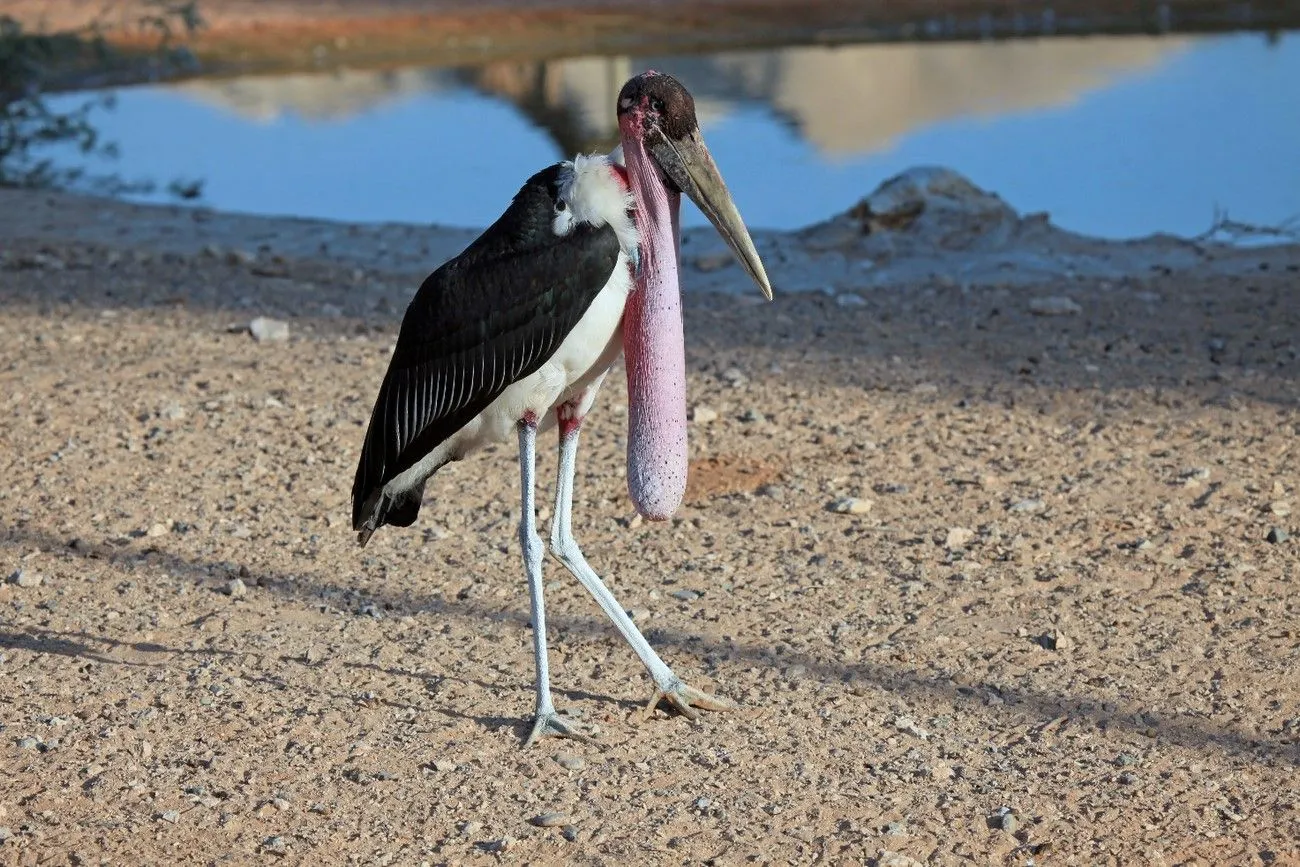
Marabou storks are primarily scavengers, often feeding on carrion (dead animals) and other organic matter. They are commonly found near water bodies, where they scavenge for fish, amphibians, and small mammals. Additionally, they are known to follow large herbivores, such as buffalo and elephants, to feed on the remains of their kills.
28. Peacock Spider
The peacock spider you see in the photo is a unique creature. He belongs to the jumping spider family and is native to Australia. They display a wide range of vivid colors and possess remarkable vision, capable of seeing the entire visible spectrum along with ultraviolet light. This visual acuity aids them in locating and catching their prey.
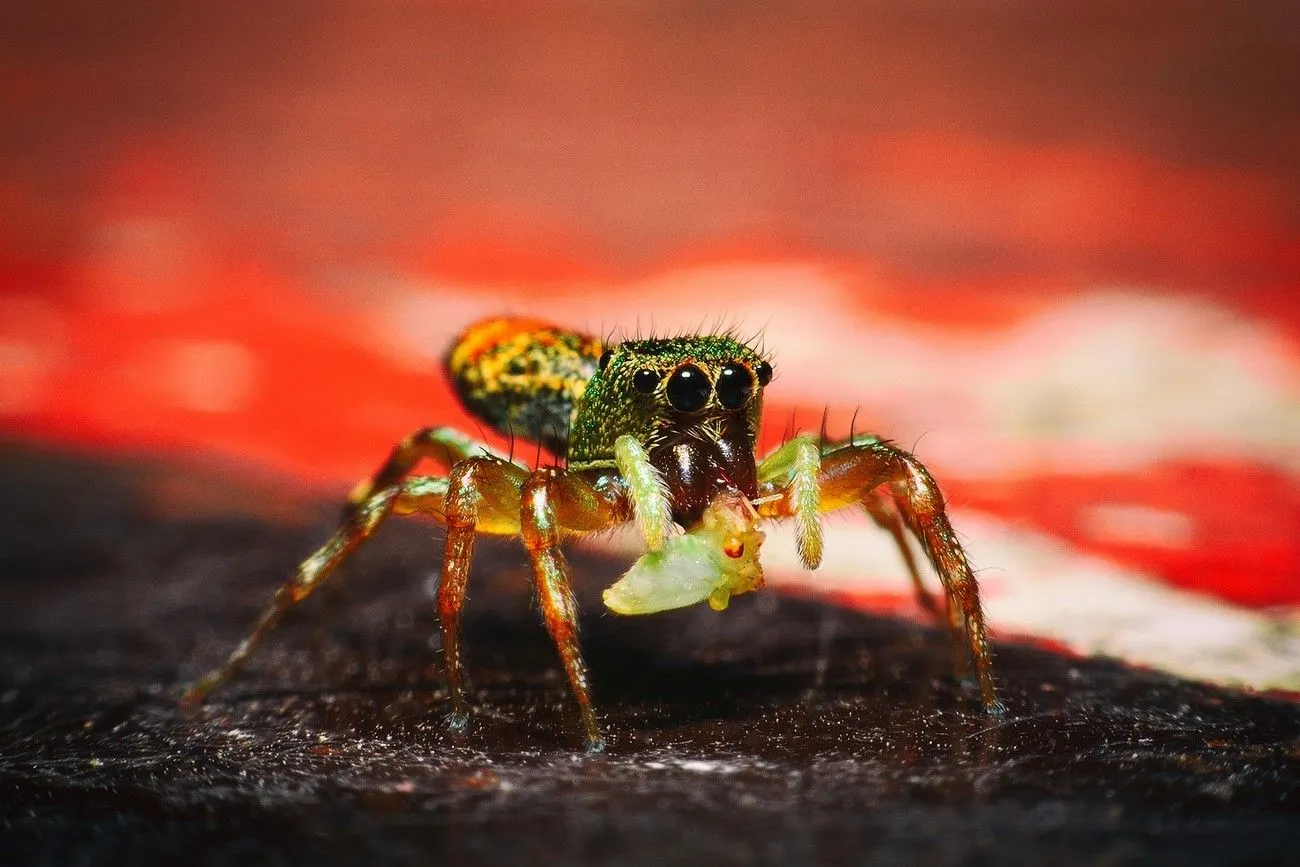
Despite their diminutive size, reaching only up to 5 millimeters in length, peacock spiders exhibit elaborate mating displays where they extend their colorful bodies akin to peacocks, hence their name. Researchers continue to study these tiny arachnids to unravel the mysteries of their complex mating rituals and unique visual capabilities.
29. Bilby
With its endearing long ears, silky fur, and slender body, the bilby is often considered one of Australia's most iconic animals. It, also known as the rabbit-eared bandicoot, is a small marsupial native to Australia. Bilbies typically measure around 29 to 55 centimeters (11 to 22 inches) in length, including their tail, and weigh between 0.5 to 2.5 kilograms (1.1 to 5.5 pounds).
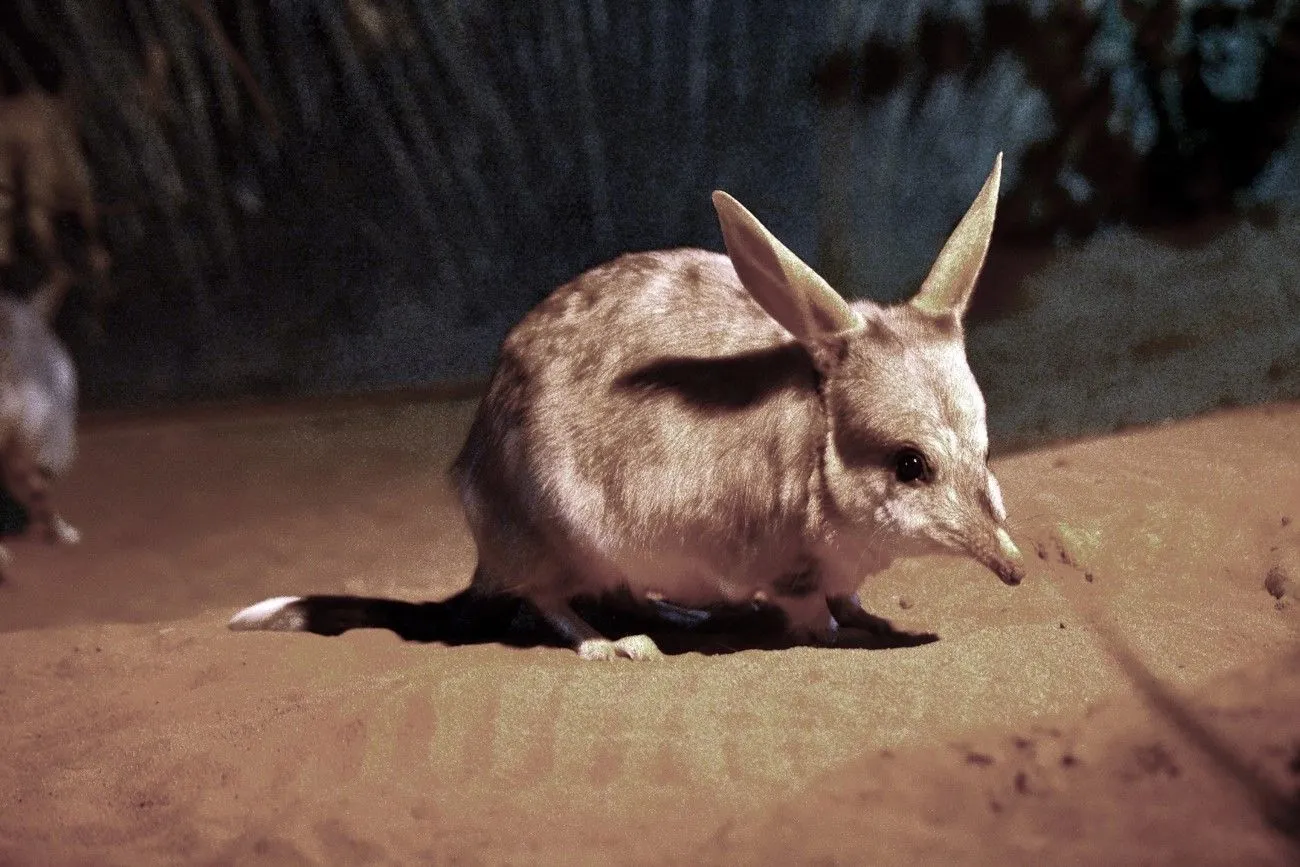
These nocturnal creatures are well-adapted to the arid environments of central and western Australia. Bilbies are proficient burrowers, using their strong forelimbs and sharp claws to excavate extensive underground tunnels and chambers. These burrows serve as shelter from predators and the harsh desert climate, providing a cool refuge during the scorching daytime temperatures.
30. Giant Salamander
Giant salamanders are exclusively aquatic, spending their entire lives in water. They rank among the largest amphibians alive and are indigenous to China, Japan, and the United States. The most extensive variety of giant salamander, found in China, can grow up to 6 feet in length. Remarkably, giant salamanders have been documented to live over 50 years in captivity.
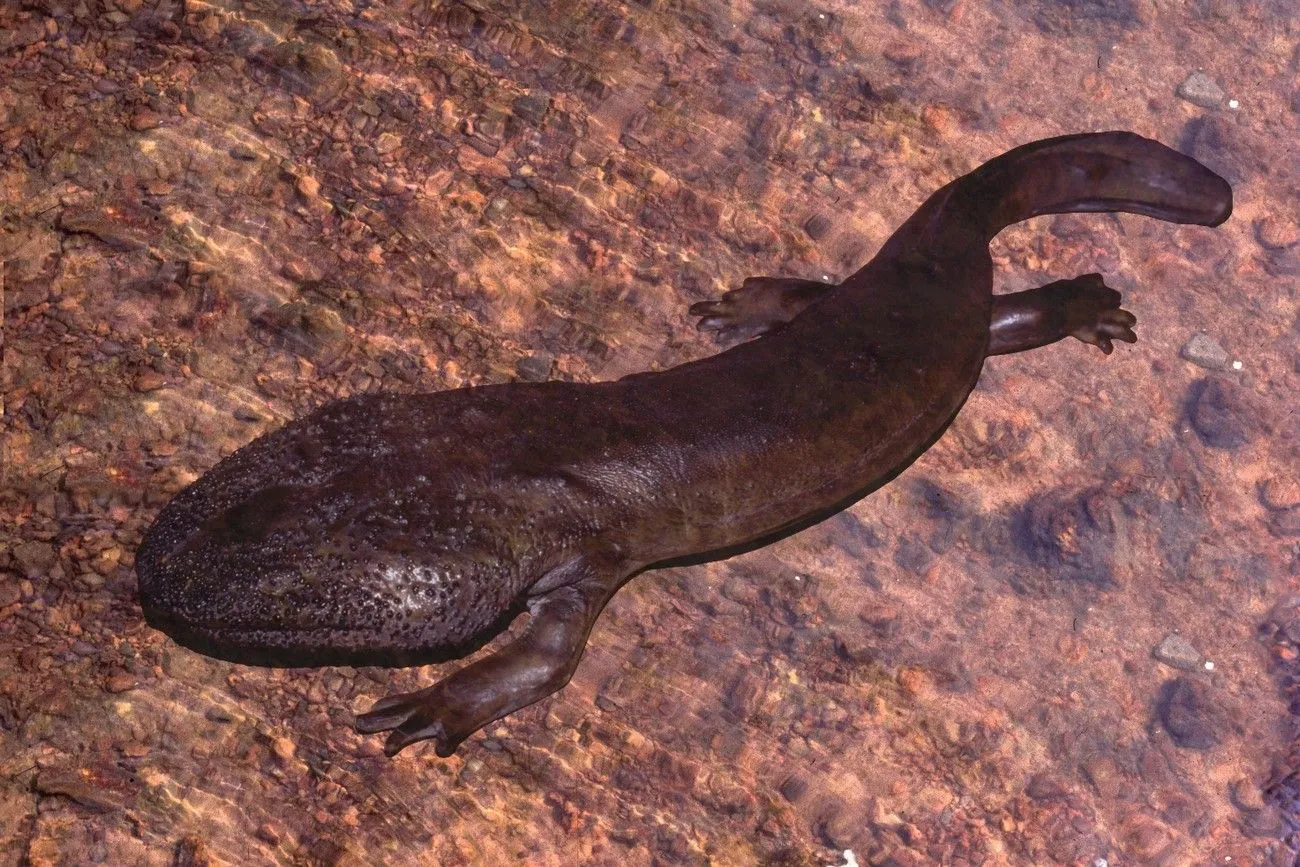
These remarkable creatures are often referred to as living fossils, as their lineage can be traced back over 170 million years. Despite their large size, giant salamanders are elusive and nocturnal, preferring to hide among rocks, crevices, and submerged vegetation during the day. They are skilled predators, feeding on a variety of aquatic organisms such as fish, crustaceans, and insects.
31. Gharial
You probably haven't heard of these unusual creatures. Gharials resemble crocodiles but are distinguished by their elongated, slender snouts, which are adorned with interlocking teeth. Male gharials can grow up to 20 feet in length and feature a distinctive protrusion on their snouts known as a "ghara," a feature absent in females.

Their elongated snouts enable them to swiftly glide through the water with minimal resistance, allowing them to effectively hunt fish, their primary source of food. Gharials are well-adapted to an aquatic lifestyle, with streamlined bodies and webbed feet aiding in swimming. Despite their formidable appearance, gharials are generally shy and pose little threat to humans.
32. Orchid Mantis
The Orchid Mantis is a mesmerizing creature known for its stunning appearance and unique hunting tactics. Native to Southeast Asia, particularly Malaysia and Indonesia, this remarkable insect has captured the attention of entomologists and nature enthusiasts alike. What sets the Orchid Mantis apart is its uncanny resemblance to a flower, particularly an orchid, hence its name.
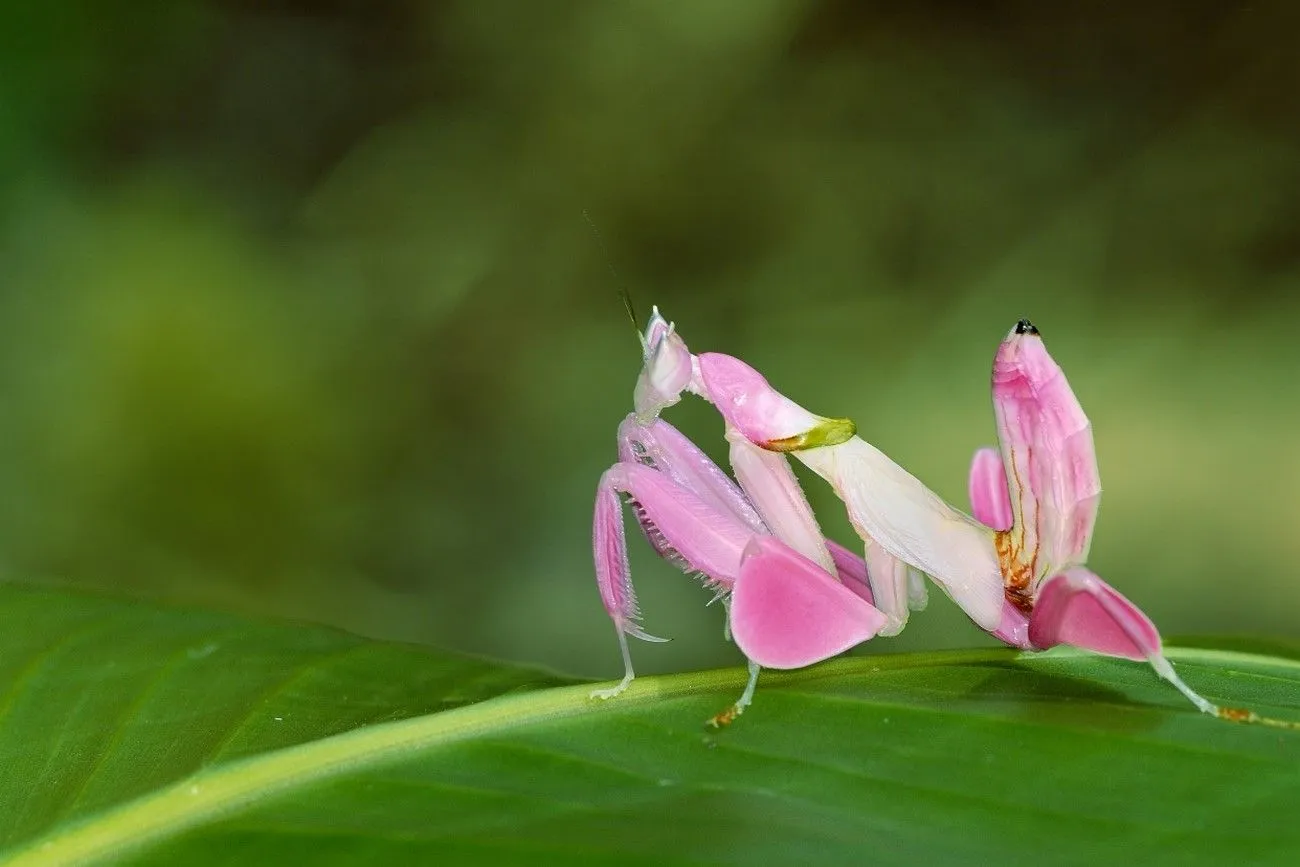
The Orchid Mantis have their own hunting strategy. It employs aggressive mimicry. The Orchid Mantis assumes a pose similar to that of a flower, swaying gently in the breeze, luring insects to come closer, thinking they've found a safe spot to feed or rest. Then, with lightning-fast reflexes, the mantis strikes, seizing its prey with its powerful forelegs.
33. Irrawaddy Dolphin
The Irrawaddy Dolphin is a marine mammal discovered in the Bay of Bengal and Southeast Asia. Unlike many other dolphin species, the Irrawaddy Dolphin's rounded head gives it a distinctive look, almost resembling that of a beluga whale. This lack of a pronounced snout sets it apart from its counterparts in the oceanic world.

The Irrawaddy Dolphin exhibits intriguing behaviors that have captured the interest of scientists and observers. They are often observed engaging in cooperative fishing with local fishermen, a remarkable example of symbiotic relationships between humans and wildlife. This cooperative behavior involves the dolphins herding fish toward the fishermen's nets, benefiting both parties.
34. Blue Parrotfish
This vibrant azure fish inhabits shallow waters within the tropical and subtropical regions of the western Atlantic Ocean and the Caribbean Sea. Approximately 80 percent of their time is dedicated to foraging, as they consume tiny organisms dwelling in sand and algae, which they graze from rocks.

Despite their small size, these fish play a crucial role in the marine ecosystem by controlling populations of small invertebrates and algae, thus helping to maintain the balance of the reef community. Furthermore, they function as prey for larger predators. However, like many marine species, these bright blue fish face threats from human activities such as overfishing and pollution.
35. Pangolin
Despite their scaly exterior, pangolins are not reptiles; they are unique among mammals for being fully covered in scales. These scales, made of keratin, the same material as human fingernails, serve primarily as a defense mechanism for these fascinating creatures. When threatened, pangolins instinctively curl into a tight ball, with their overlapping scales forming a protective armor-like barrier against predators.
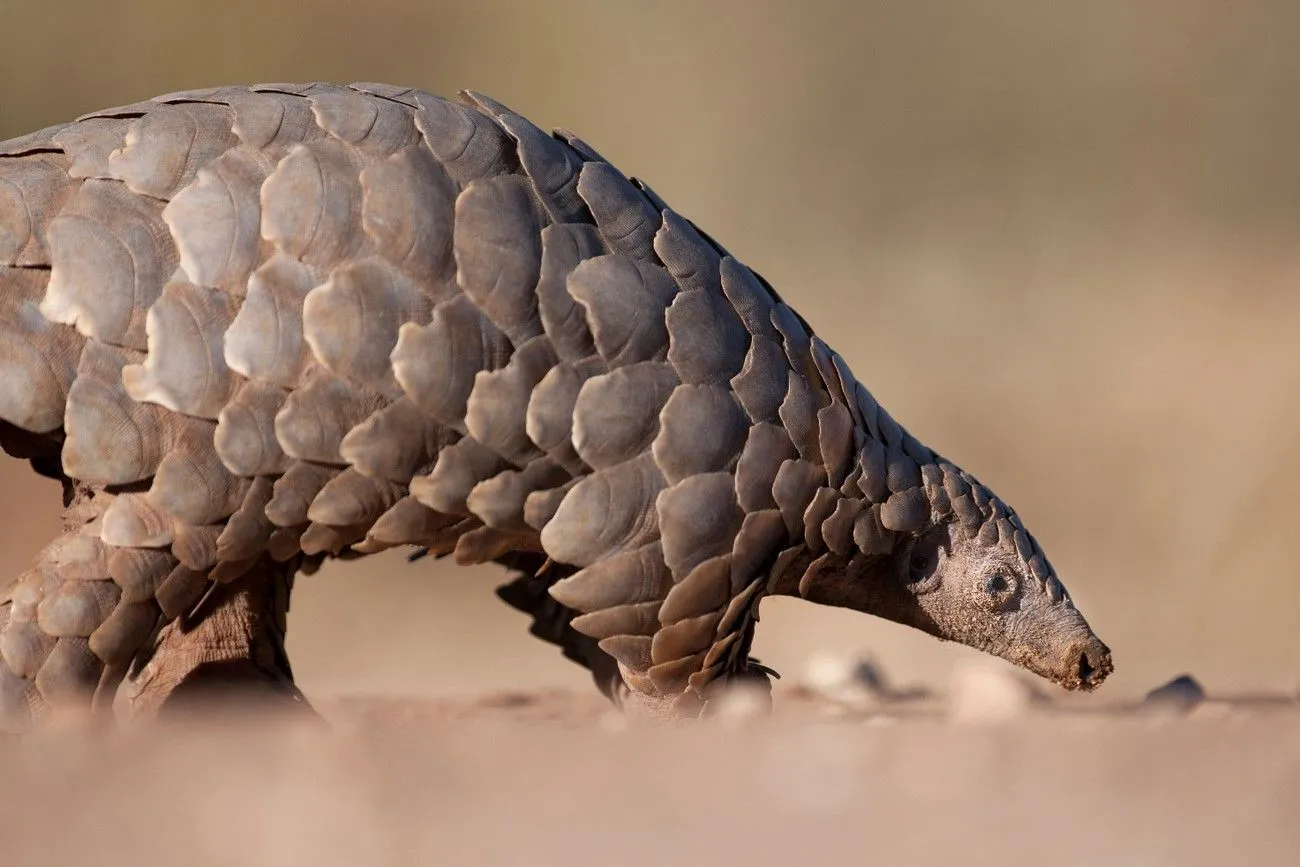
This remarkable adaptation has earned pangolins the nickname "scaly anteaters". However, despite their formidable defense strategy, pangolins are still highly vulnerable to human activities such as habitat loss, poaching, and illegal trade. Conservation efforts are essential to protecting pangolins and ensuring their survival in the wild.
36. Dugong
Dugongs are famous as sea cows. These captivating creatures are found in the warm coastal waters of the Indo-Pacific region, particularly in areas such as Australia, the Red Sea, and the Indian Ocean. One of the most intriguing aspects of dugongs is their close evolutionary relationship to elephants. Dugongs share several anatomical similarities with elephants.
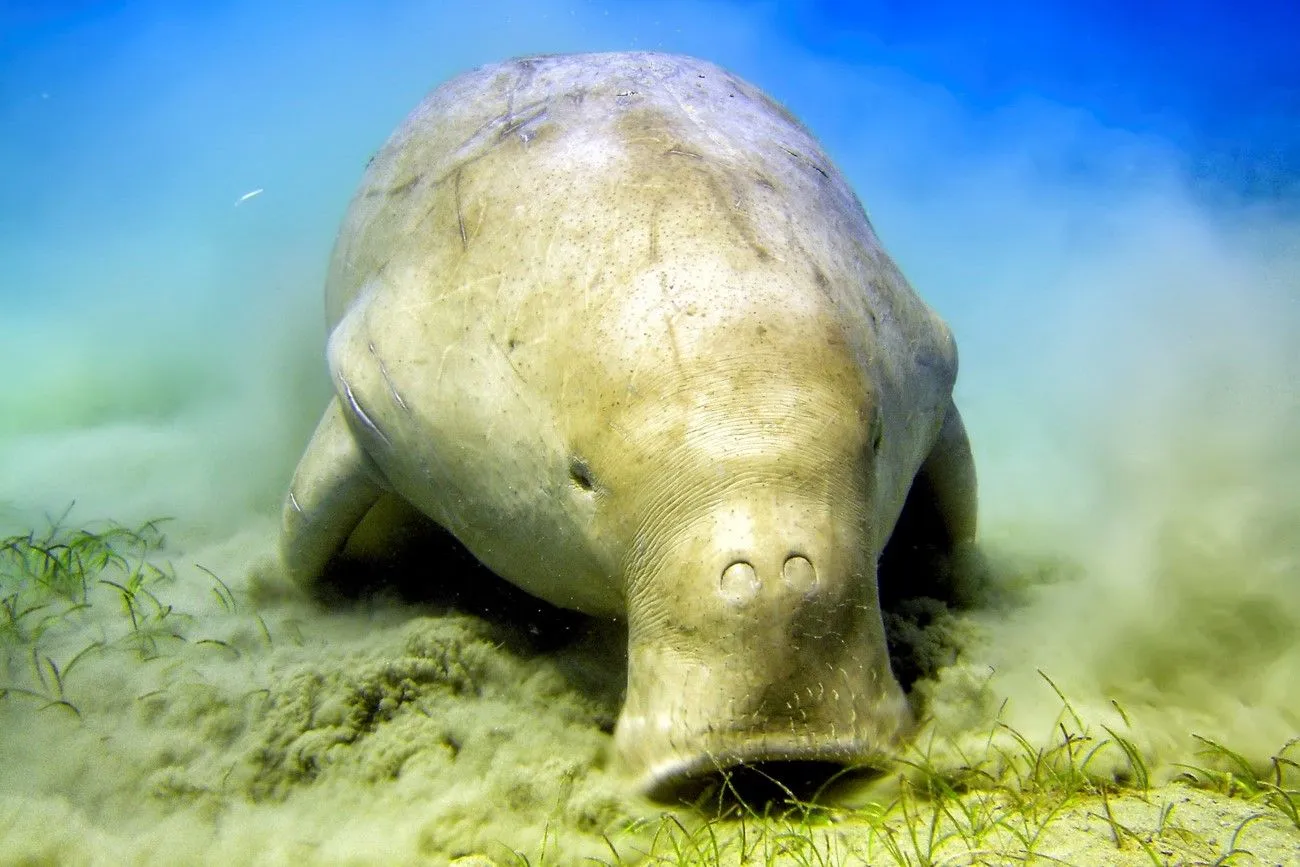
They have a large size, thick skin, and unique tusks. Dugongs are the only herbivorous marine mammals to possess tusks used primarily for digging up seagrass, their primary source of food. Seagrass meadows play a vital role in the dugong's life, serving as both their food source and habitat. Dugongs are expert grazers, using their sensitive lips to uproot seagrass from the ocean floor.
37. Magnificent Frigatebird
The male magnificent frigatebird can be distinguished by its vivid red gular sac, employed to allure potential mates. Magnificent frigatebirds belong to the largest species within the frigatebird family, a group of seabirds, boasting wingspans reaching up to 8 feet wide. In their non-inflated state, their gular sacs hang just beneath their chin, resembling a deflated balloon to some extent.
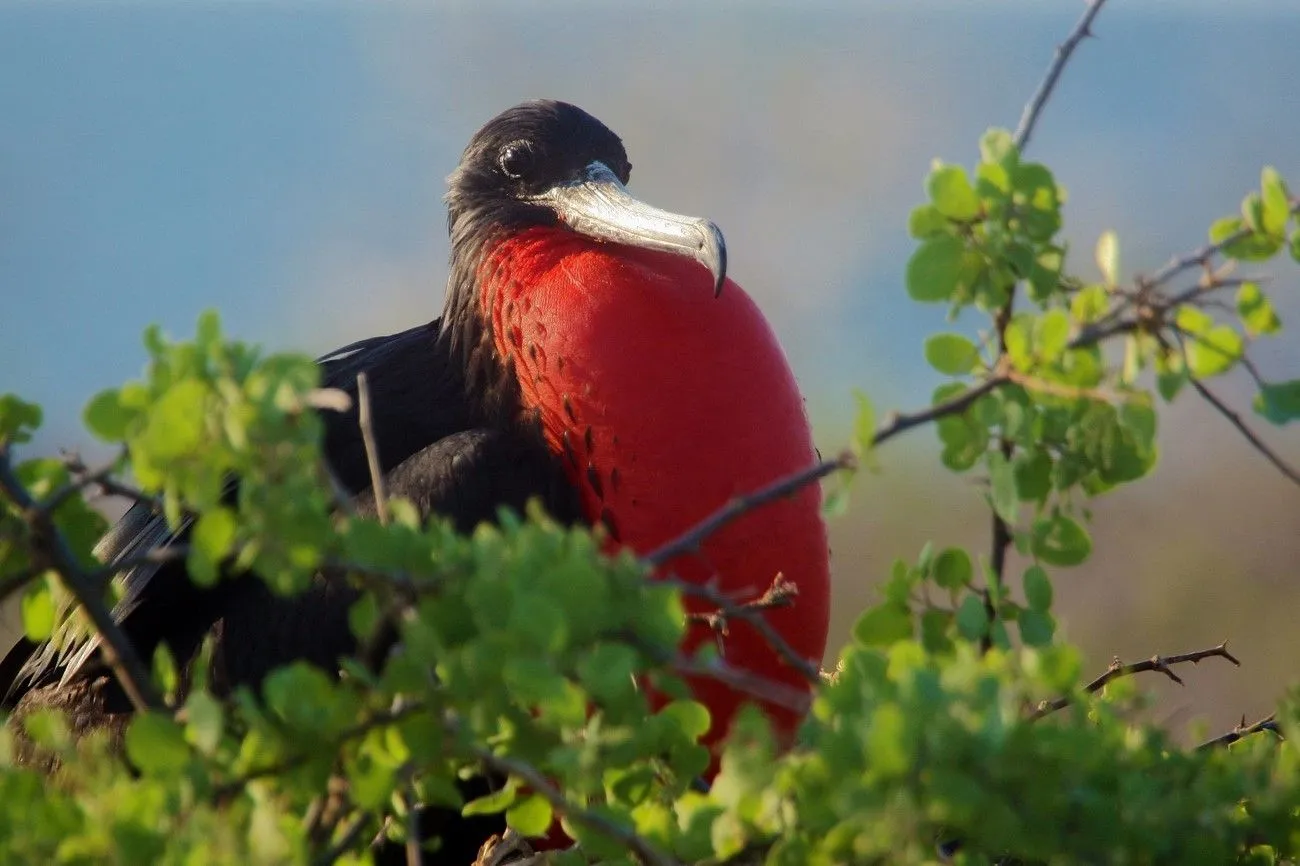
The magnificent frigatebird is recognized as a kleptoparasite, indicating its behavior of pecking at smaller seabirds until they regurgitate their food, which the bird then consumes. This unique feeding behavior allows the magnificent frigatebird to obtain food without expending energy on hunting or fishing.
38. Coatimundi
Coatimundi are agile climbers and skilled foragers, often using their sharp claws and keen sense of smell to locate food in the dense vegetation of their tropical forest habitats. They are highly social animals, living in groups called bands, typically consisting of females and their babies, with males living solitary lives or forming smaller bachelor groups.

Coatimundi are also known for their boldness. Sometimes they can become a nuisance to humans, particularly in areas where their natural habitats overlap with human settlements. However, these intelligent and adaptable creatures play an essential role in their ecosystems as seed dispersers and insect controllers, helping to maintain the balance of their forest environments.
39. Kinkajou
Kinkajous are highly adapted to their arboreal lifestyle, with long, agile limbs and sharp claws that enable them to navigate the dense canopy with ease. Their keen sense of smell helps them locate ripe fruit, their primary food source, as well as the sweet nectar found in flowers and beehives. Despite their adorable appearance and gentle demeanor, kinkajous can become aggressive.
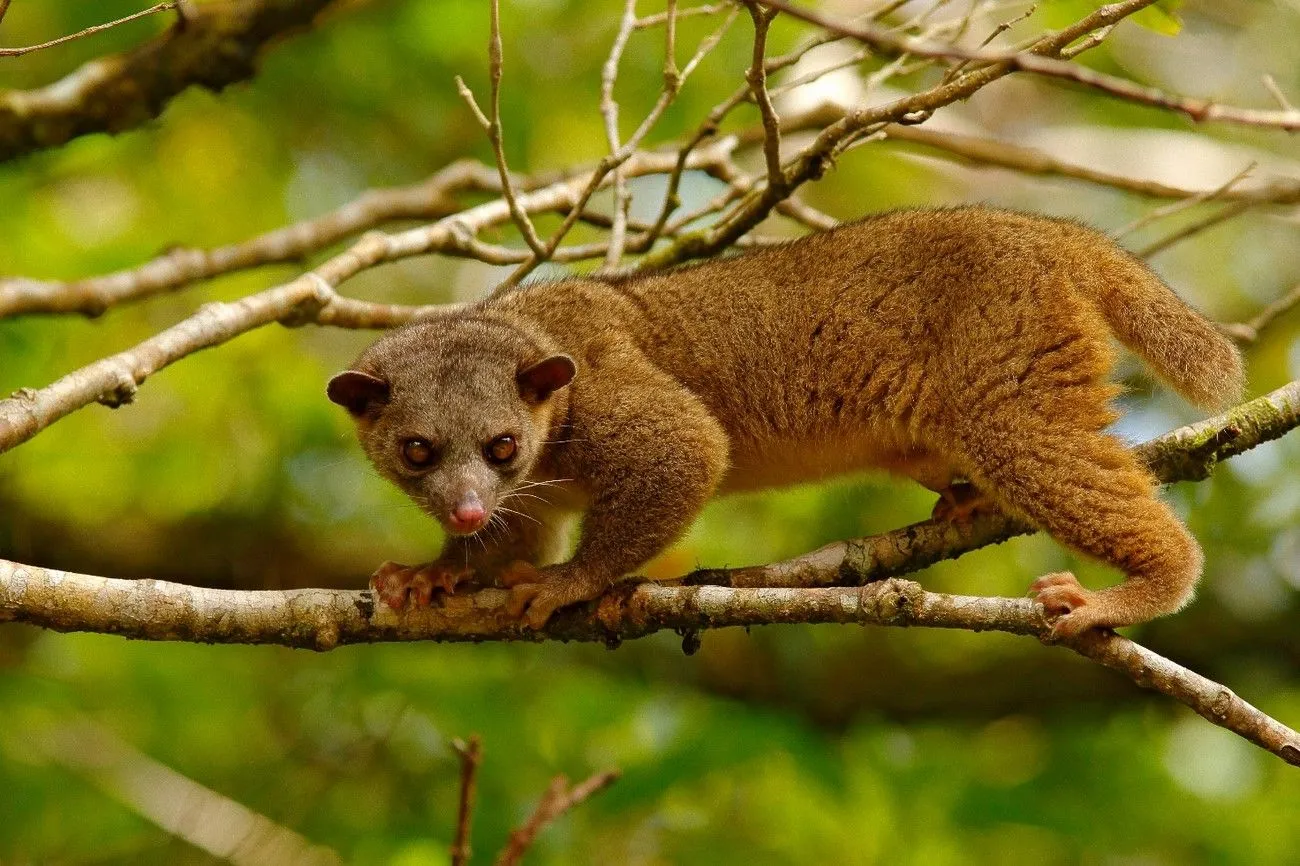
If somebody provokes or threatens them these animals can use their sharp teeth and claws for defense. However, they are typically shy and elusive creatures, preferring to avoid confrontations whenever possible. Strictly nocturnal, kinkajous are seldom observed by humans. They possess a prehensile tail. It helps them maneuver through the trees of their rainforest habitat.
40. Philippine Eagle
The Philippine eagle stands as one of the largest birds of prey globally and is exclusively native to the Philippines. Designated as the national bird of the Philippines in 1995, it also holds the distinction of being one of the rarest avian species worldwide. Estimates suggest that fewer than 500 Philippine eagles are remaining.
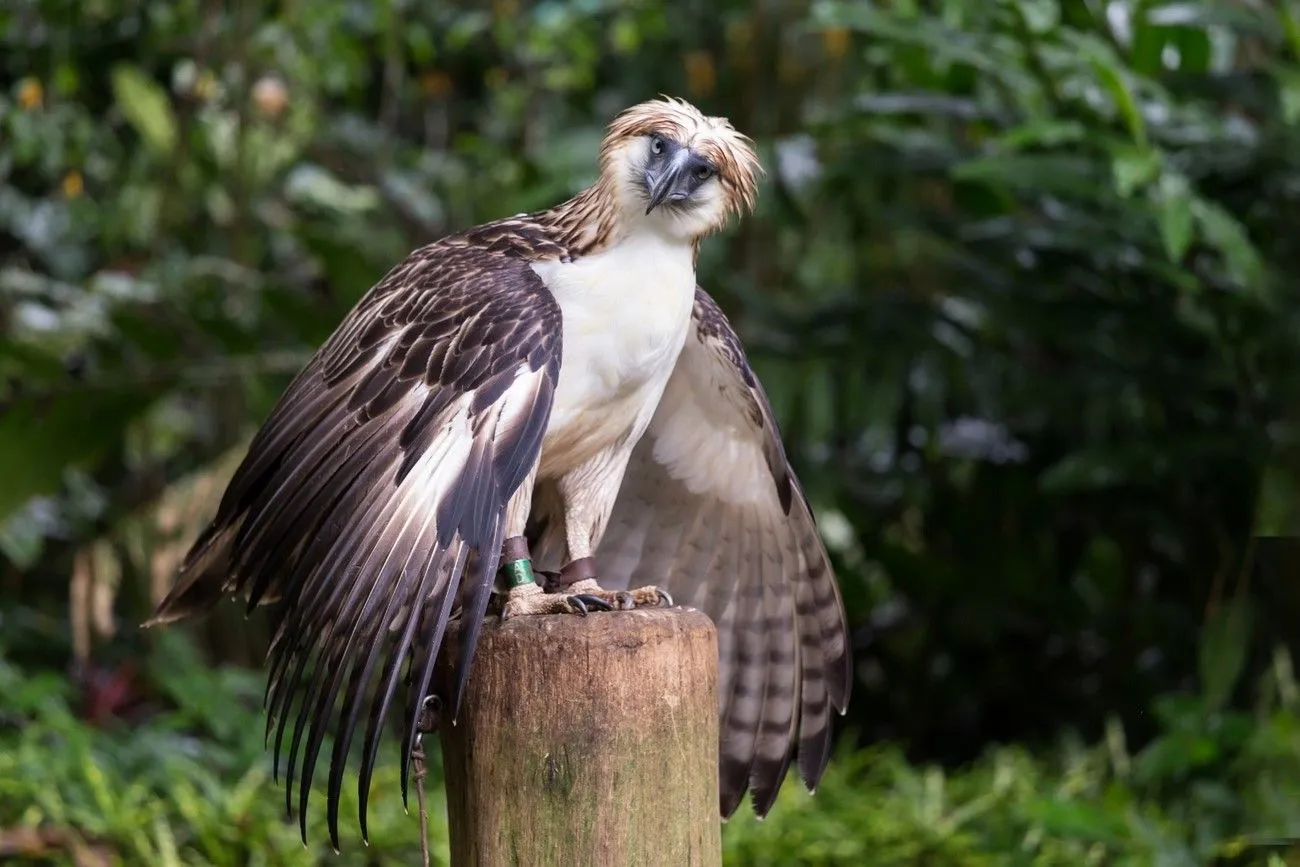
Characterized by a prominent tuft of feathers atop its head and a penetrating gaze. Its impressive wingspan and powerful talons make it a formidable predator in its forest habitat. This eagle was historically referred to as the monkey-eating eagle. While it does indeed prey on monkeys, it exhibits a varied diet, consuming animals of different sizes.
41. Stick Insect
Stick insects belong to an insect order known as Phasmatodea, deriving their name from their remarkable resemblance to sticks or twigs. This natural camouflage serves as a crucial defense mechanism, aiding these herbivorous insects in evading predators within their woodland habitats. Stick insects are distributed across all continents except Antarctica.

These fascinating creatures come in a variety of shapes and sizes, with some species reaching lengths of up to 13 inches (33 centimeters). Their elongated bodies and slender limbs further enhance their stick-like appearance, making them virtually indistinguishable from the branches and foliage among which they dwell.
42. Worm Lizard
The worm lizard lacks external ears, eyes, and limbs. It predominantly resides underground in burrows, utilizing its head to push through the soil and construct tunnels. Their diet consists mainly of spiders, worms, and termites. In the United States, worm lizards inhabit Florida. Despite their seemingly simple appearance, worm lizards possess remarkable adaptations.

Their lack of external ears and eyes is compensated by their highly sensitive sensory organs, allowing them to detect vibrations and movement in the soil. Worm lizards are adept burrowers, using their strong, muscular bodies to create intricate tunnel systems. These burrows provide shelter from predators and stable microclimates, helping to regulate temperature and humidity levels.
43. Hummingbird Hawk-Moth
Hummingbird hawk-moths exhibit a remarkable ability to learn colors, making them intriguing subjects of study for scientists interested in animal cognition and behavior. Despite being insects, these moths demonstrate a level of intelligence that allows them to recognize and associate different colors with food sources, such as nectar-rich flowers.

In their native Eurasian habitats, hummingbird hawk-moths have long been regarded with reverence and considered a symbol of good fortune. Their graceful flight, resembling that of hummingbirds, and their delicate appearance have contributed to their mystical allure in various cultures throughout history.
44. Southern Cassowary
The term "cassowary" originates from Papuan vocabulary, meaning "horned" and "head," which fittingly describes this bird resembling a dinosaur. Cassowaries feature a hollow, fan-shaped horn on their heads, reminiscent of prehistoric eras. These birds can reach heights of up to 6 feet, ranking as the third tallest birds globally. They are flightless and lay eggs with green shells.

Cassowaries are renowned for their powerful legs, adorned with sharp claws that they use for defense and foraging. Despite their large size, they are agile and swift runners, capable of reaching speeds of up to 30 miles per hour (50 kilometers per hour). Their dense, coarse plumage, which ranges in color from black to blue, provides them with insulation and protection.
45. Babirusa
Babirusas, often referred to as deer pigs due to their distinctive horns curving from their mouths and snouts, possess tusks that are not as robust as they appear and do not appear to be utilized in combat. During confrontations, babirusas engage in peculiar behavior, standing on their hind legs and boxing with their front legs.
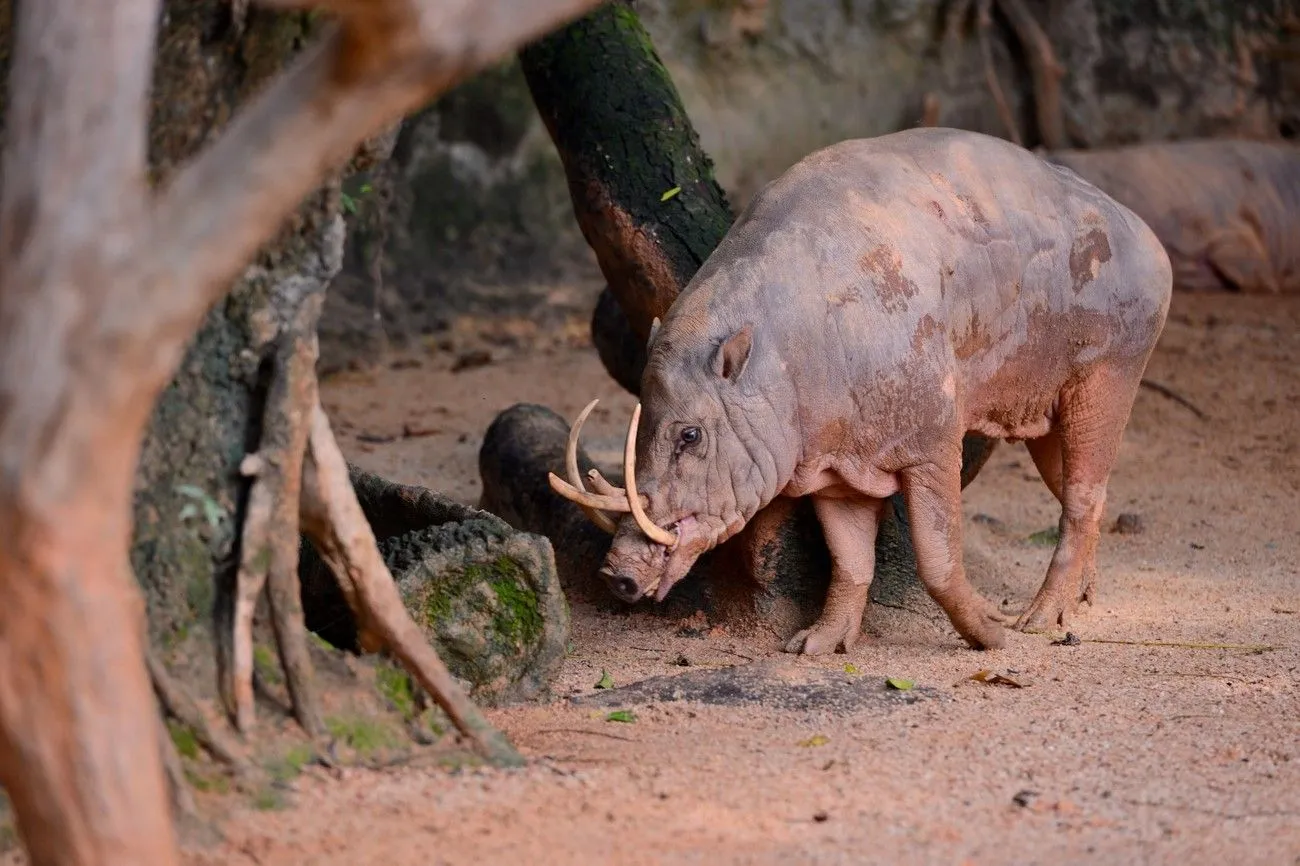
Their physique includes long, slender legs reminiscent of deer. Moreover, babirusas' canine teeth undergo continuous growth throughout their lives. Despite their name and physical resemblance to pigs, babirusas are more closely related to wild boars. They inhabit the dense rainforests and swamps of the Indonesian islands, where they primarily feed on fruits, roots, and small invertebrates.
46. Shoebill
This bird with a menacing gaze will catch your attention. Shoebills are named for their distinctive beaks, which bear a resemblance to Dutch wooden shoes. These birds boast an impressive 8-foot wingspan and are renowned for their intense gazes. Their diet primarily consists of aquatic creatures such as fish, water snakes, lizards, young turtles, and frogs.
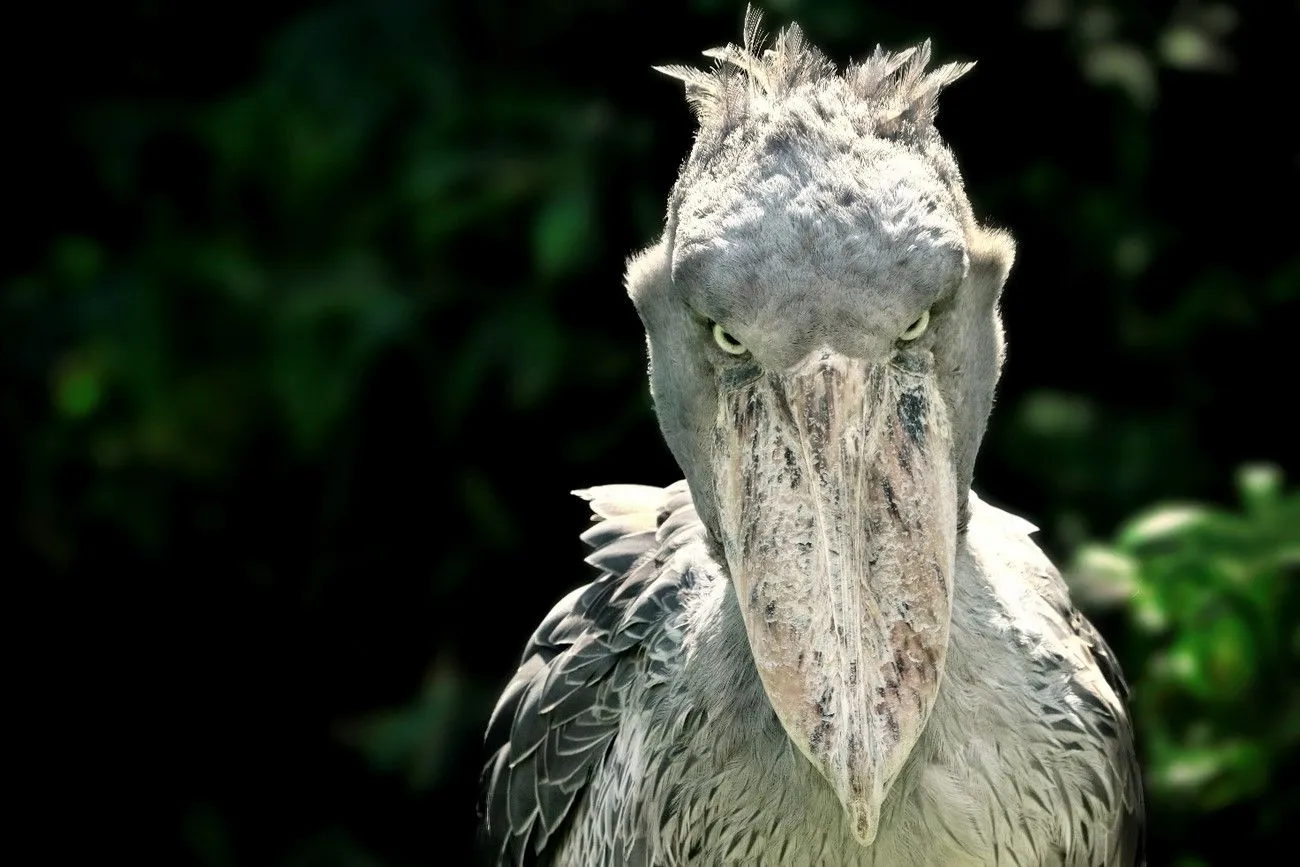
Additionally, shoebills use their bills to collect water, which they then transport to their young in the nests. Using their large bills, shoebills scoop up their prey from the water's surface or snatch them from the surrounding vegetation. Their bills also serve as effective tools for collecting water, a crucial task for sustaining their young in the nests.
47. Giant Isopod
Giant isopods rank among the largest crustaceans globally, reaching lengths of up to 16 inches. They inhabit the frigid depths of the ocean, where they are relatively plentiful. These creatures scavenge for food on the ocean floor, consuming whatever they encounter, and can endure extended periods without food, with some specimens surviving up to five years in captivity without sustenance.
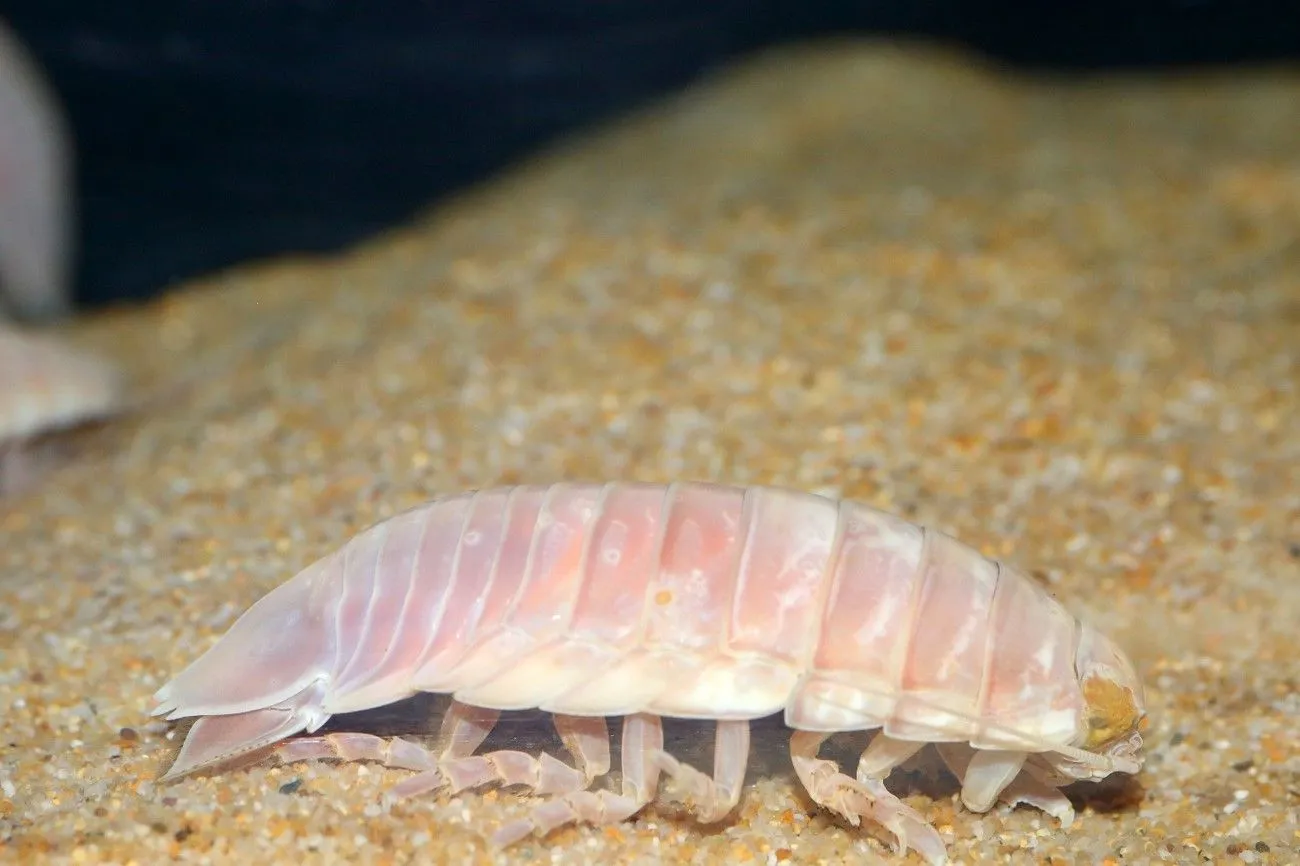
Despite their large size, giant isopods are not fast-moving creatures. Instead, they rely on their scavenging behavior to find food in their deep-sea environment. Their diet typically consists of dead animals, fish carcasses, and other organic matter that sinks to the ocean floor. Their ability to survive for long periods without food is a remarkable adaptation to their harsh environment, where food may be scarce.
48. Okapi
Okapis are the sole surviving relatives of giraffes. They bear partial stripes resembling those of zebras, aiding young okapis in navigating the dense rainforests of their habitat by following their mothers. Interestingly, these stripes serve not as camouflage but rather mimic the dappled light of the forest when observed in the okapi's natural environment.
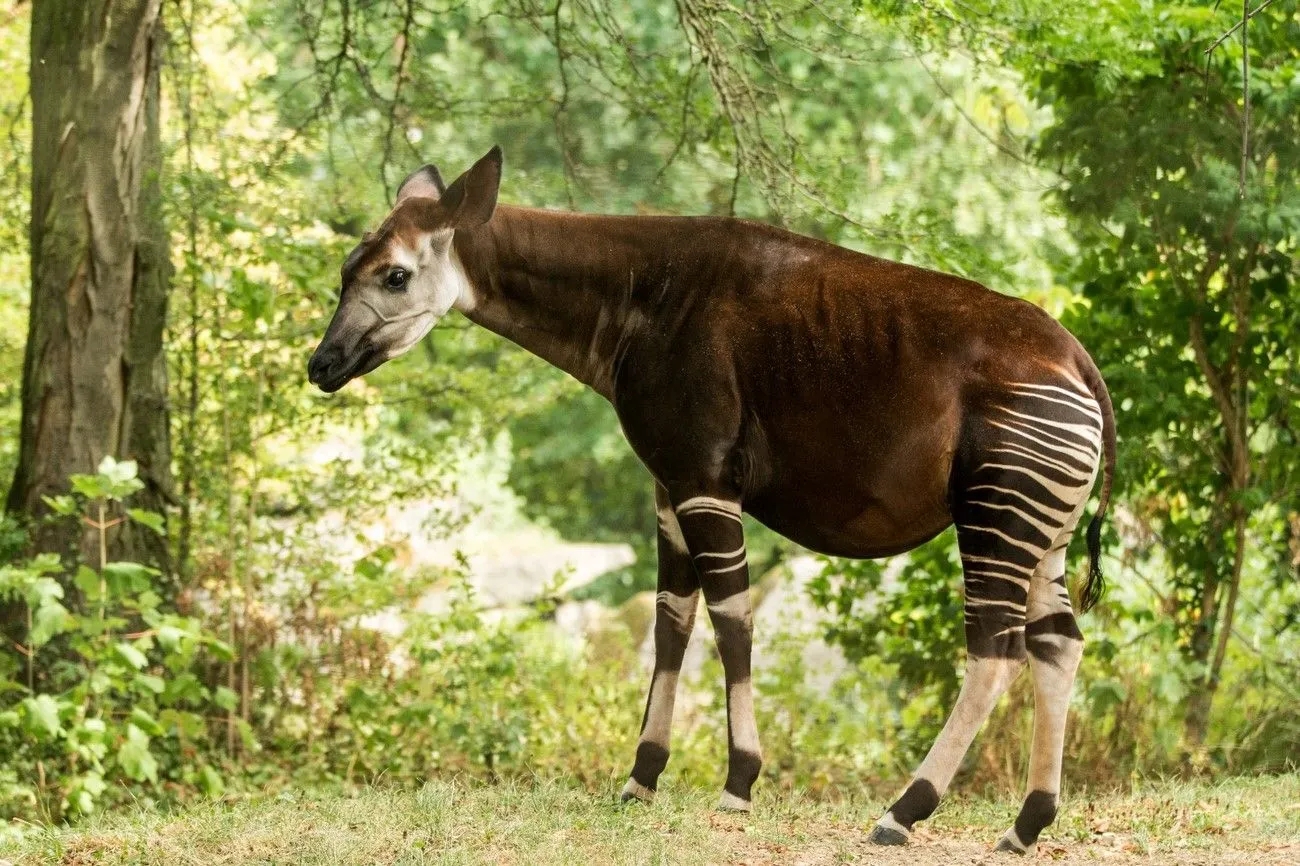
This cryptic coloration helps them evade predators such as leopards and pythons that inhabit their forest habitat. Okapis have adapted to a solitary lifestyle, with females typically raising their calves alone in secluded areas of the forest. They communicate using a series of vocalizations, including soft moans and grunts, to maintain contact with one another in the dense vegetation.
49. Markhor
The distinctive feature of the markhor is its large, twisted horns, although it also possesses a long coat and exceptionally wide hooves. The term "markhor" translates to "snake eater" and holds cultural significance in the folklore of its native habitat, where these animals were believed to possess special powers derived from their twisted horns, enabling them to combat snakes.
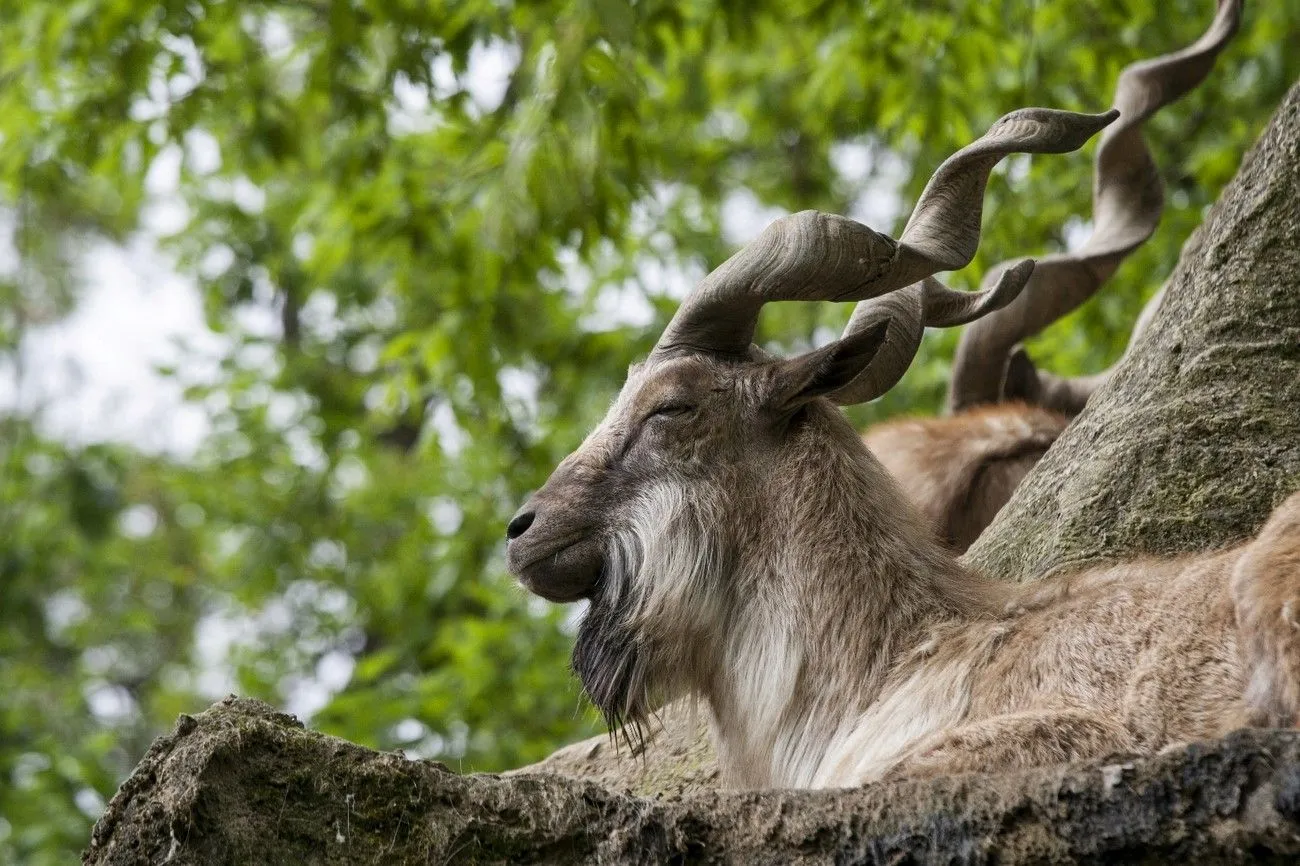
Markhors hold the esteemed status of being the national animal of Pakistan. However, their population faces significant threats, with less than 1,500 individuals remaining in the wild. Conservation efforts are essential to safeguard the markhor and preserve its place in the natural heritage of Pakistan.
50. Lyrebird
Lyrebirds are terrestrial avians found in Australia. Their name stems from the distinctive shape of their tail feathers, resembling a lyre, which they prominently display during courtship displays. Renowned for their exceptional vocal abilities, lyrebirds can mimic a wide range of sounds, including the calls of other creatures as well as mechanical and human noises.
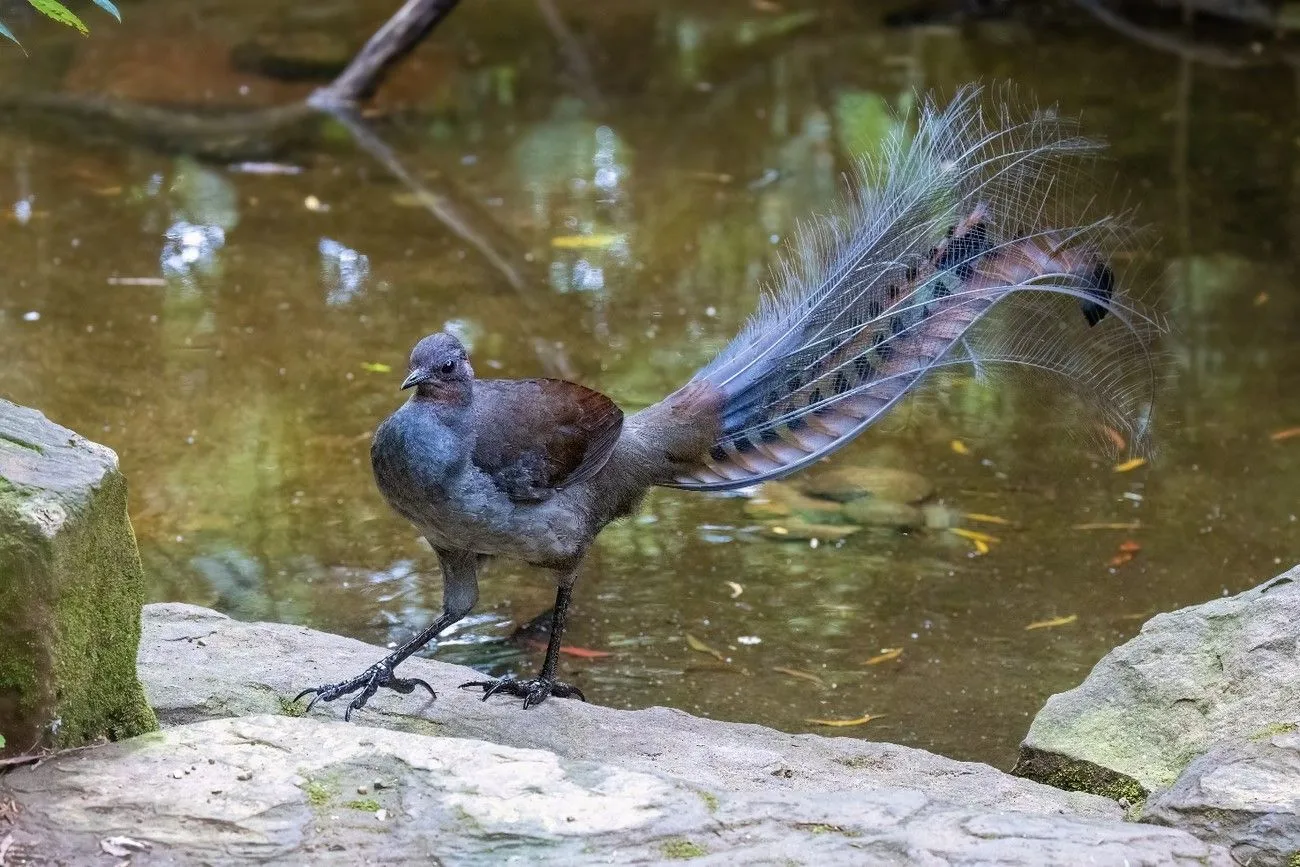
During the height of the breeding season, these birds engage in extensive singing sessions lasting up to four hours daily. They are adept at creating their unique songs, which they use to establish territory and attract mates. In addition to their impressive vocal talents, lyrebirds are well-known for their elaborate courtship displays. They perform cunning dances, enticing the male.